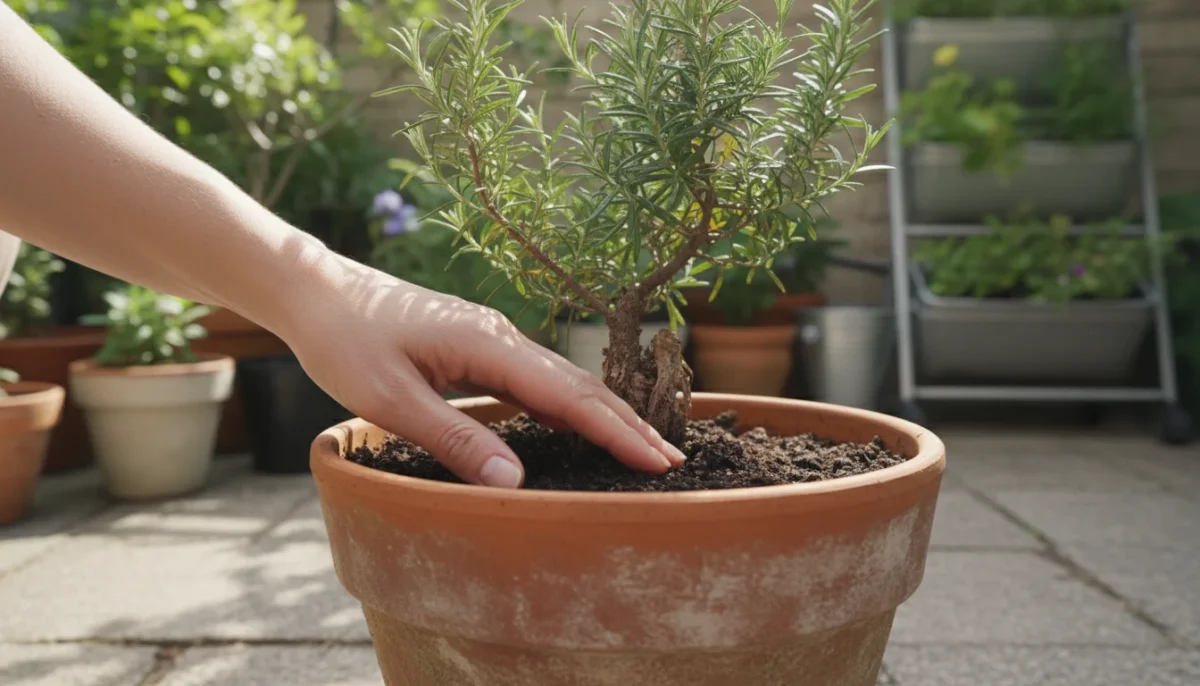Your small garden brings immense joy, whether it is a bustling balcony, a compact patio, or a cozy backyard corner. Every time you dig, prune, or plant, your hands become your most essential tool. Protecting them is not an optional luxury, it is a practical necessity for comfortable, productive gardening. Choosing the right gardening gloves means the difference between a pleasant afternoon tending your plants and a session ending with blisters, scratches, or even worse, an unexpected encounter with unseen pests or harmful bacteria. This article guides you through the world of gardening gloves, helping you identify the best gloves for gardening in your small space.
We will explore various materials, discuss critical features like fit and grip, and match specific glove types to common small-space gardening tasks. Our goal is to equip you with the knowledge to select durable, comfortable, and highly protective gardening gloves, ensuring your hands stay safe and ready for your next gardening adventure. Let us make your gardening experience safer and more enjoyable, one pair of gloves at a time. This thorough tool reviews guide will help you find the perfect pair.
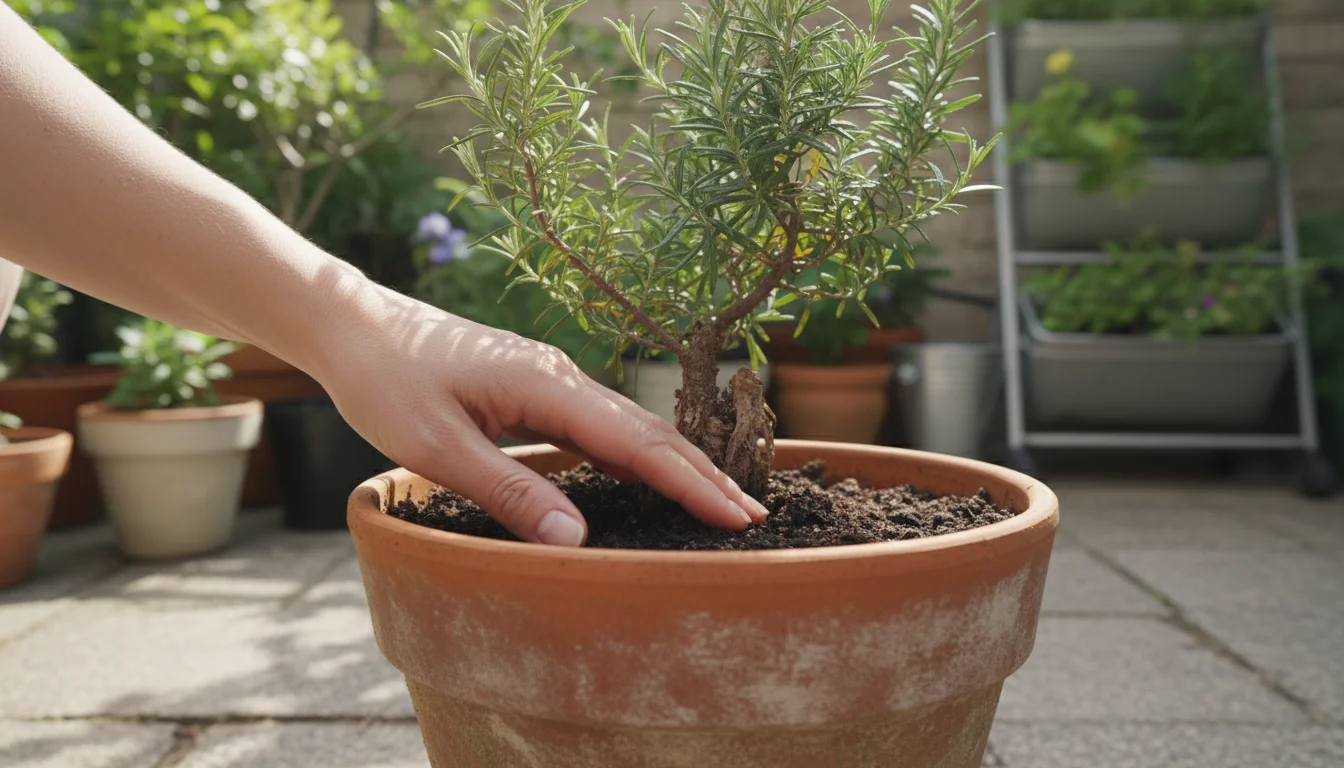
Why Gardening Gloves Matter: Beyond Basic Protection
Many new gardeners underestimate the importance of quality gardening gloves. You might think a quick planting job does not require hand protection, but even minor tasks carry risks. Your hands face numerous hazards in the garden, even in the smallest of spaces. These risks range from minor annoyances to serious health concerns. Understanding these dangers helps you appreciate why selecting the right pair of gloves is a foundational step in safe gardening.
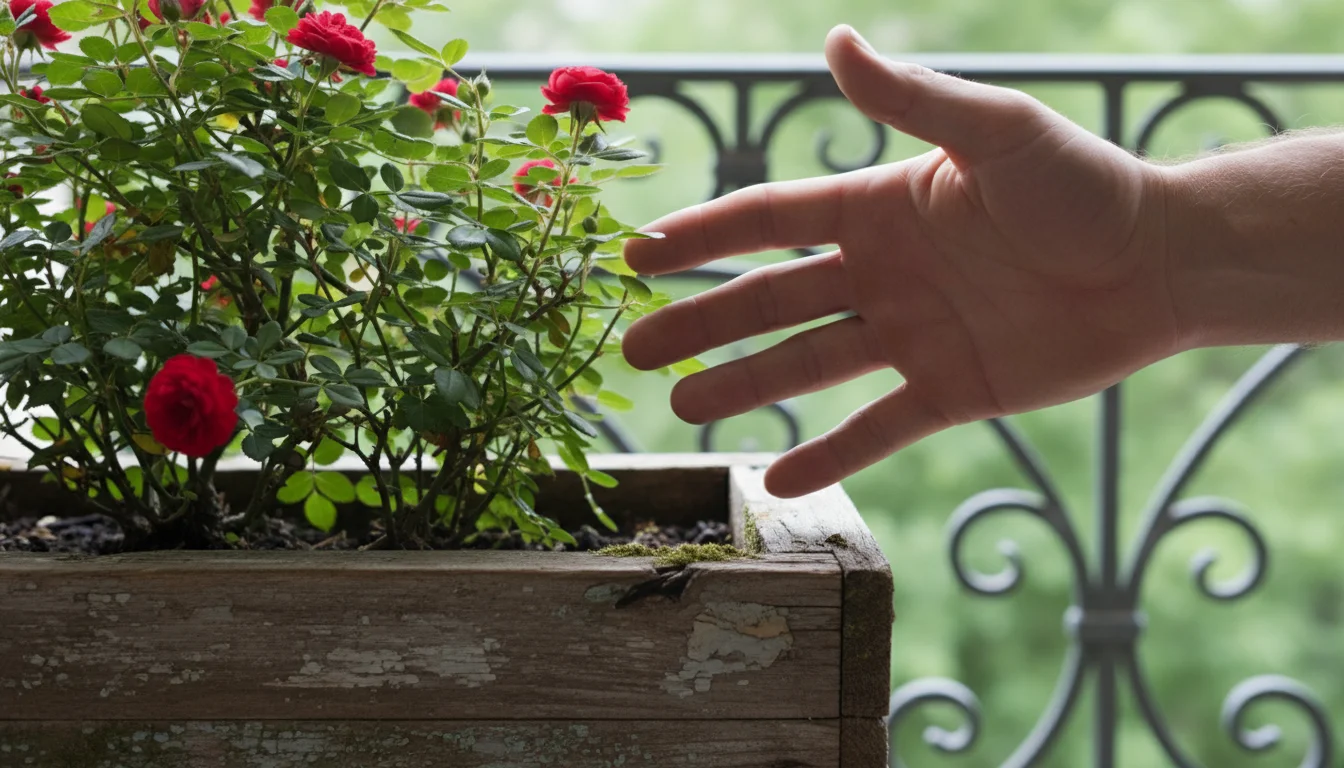
Common Hand Hazards in the Garden:
- Thorns and Splinters: Rose bushes, berry plants, and many ornamentals possess sharp thorns. Even seemingly harmless plant stems can conceal tiny splinters. Digging in soil often uncovers bits of wood or sharp debris. Gloves create a barrier against these painful penetrations.
- Blisters and Abrasions: Repetitive tasks like digging, weeding, or pruning without gloves can quickly lead to blisters. The friction from tool handles or rough soil causes skin irritation and breakdown. Gloves absorb this friction, preventing painful sores.
- Skin Irritants and Allergens: Many plants, such as poison ivy, stinging nettle, or even common ornamental plants, release sap or have hairs that can irritate your skin. Some people develop allergic reactions to certain plant materials. Gloves prevent direct contact, protecting you from these unpleasant reactions.
- Soil-borne Pathogens: Garden soil harbors various microorganisms, some of which can cause infections if they enter cuts or open wounds on your hands. Examples include tetanus bacteria or fungal spores. A good pair of gloves acts as a shield, minimizing exposure to these potential threats.
- Chemical Exposure: If you use fertilizers, pesticides, or even organic pest deterrents, direct skin contact can be harmful. Gloves provide a crucial barrier, preventing these substances from absorbing into your skin. Always check chemical product labels for specific personal protective equipment recommendations.
- Insect Bites and Stings: Wasps, spiders, ants, and other insects can reside in your garden beds. Reaching into foliage or overturning soil can disturb them, leading to unexpected bites or stings. Gloves add an extra layer of defense against these unwelcome encounters.
- Sun Exposure: Prolonged time outdoors exposes your hands to harmful UV rays. While not the primary function, some gloves offer a degree of sun protection for your hands, preventing sunburn and long-term skin damage.
Beyond protection, gloves also enhance your gardening experience. They improve your grip on tools, reduce fatigue, and keep your hands cleaner. For small-space gardeners who often work in close quarters with delicate plants or compact containers, dexterity and comfort are key. You want gloves that protect without hindering your ability to handle small seedlings or maneuver around tight spaces. Choosing the best gloves for gardening means prioritizing both safety and functionality.
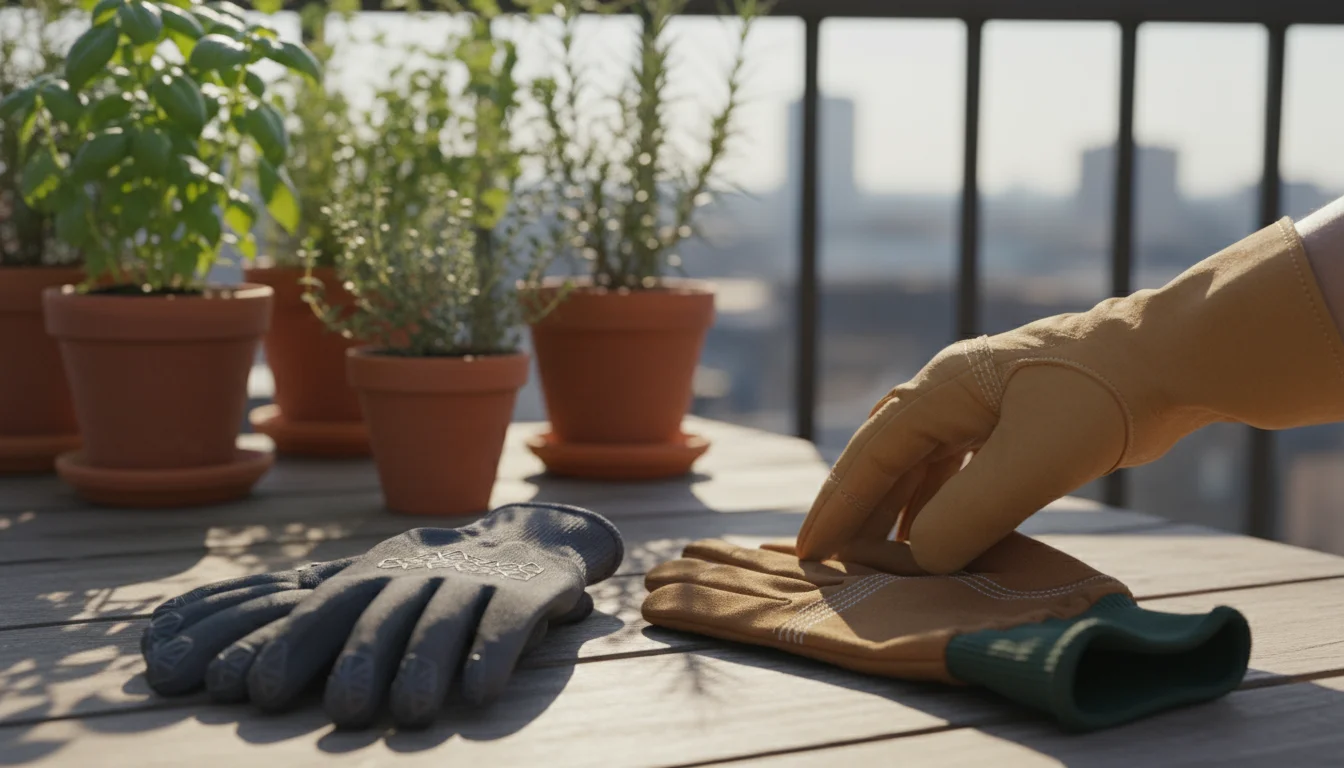
Understanding Glove Materials and Construction
The vast array of gardening gloves available can seem overwhelming. You will find gloves made from a single material or sophisticated combinations, each designed for specific purposes. Understanding these materials helps you match the glove to your typical tasks and environmental conditions. Here is a breakdown of common materials and their characteristics:
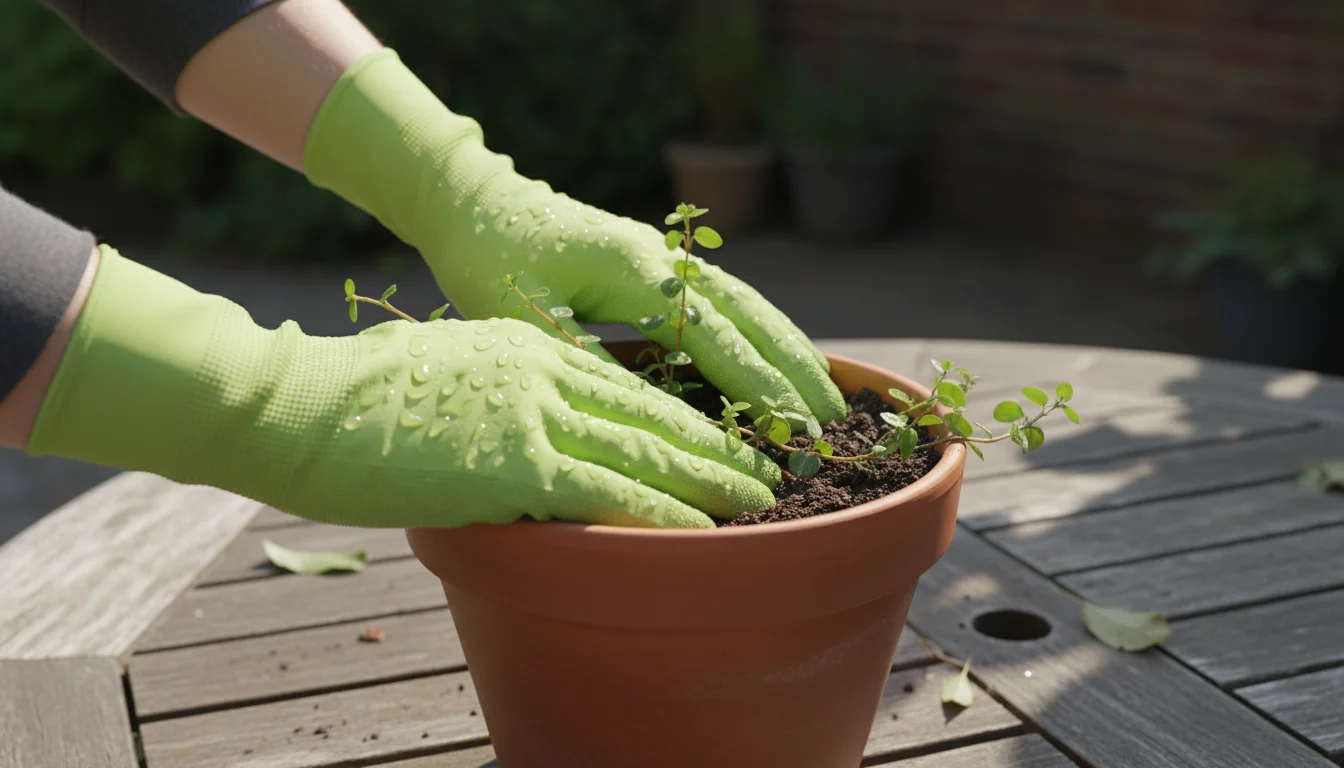
Synthetic Materials:
- Nitrile: Often seen as a coating on cotton or nylon gloves, nitrile offers excellent puncture resistance, good dexterity, and a strong grip, even when wet. It is a common choice for general-purpose gardening gloves, providing a balance of protection and tactile feel. Nitrile is also a good alternative for those with latex allergies.
- Latex: Latex coatings offer good grip and flexibility, but they are less durable against punctures than nitrile. The primary drawback is that many people have latex allergies. If you use latex gloves, ensure no one with an allergy will handle them.
- Neoprene: Known for its water resistance and insulation properties, neoprene is ideal for working in wet or cool conditions. It provides good flexibility and keeps your hands dry, making it useful for watering, cleaning ponds, or working with wet soil.
- Nylon and Spandex: These form the base fabric for many lightweight gloves. They offer stretch, breathability, and a close fit, contributing to excellent dexterity. They are often combined with coatings like nitrile or latex on the palms for added protection and grip, while the backs remain breathable.
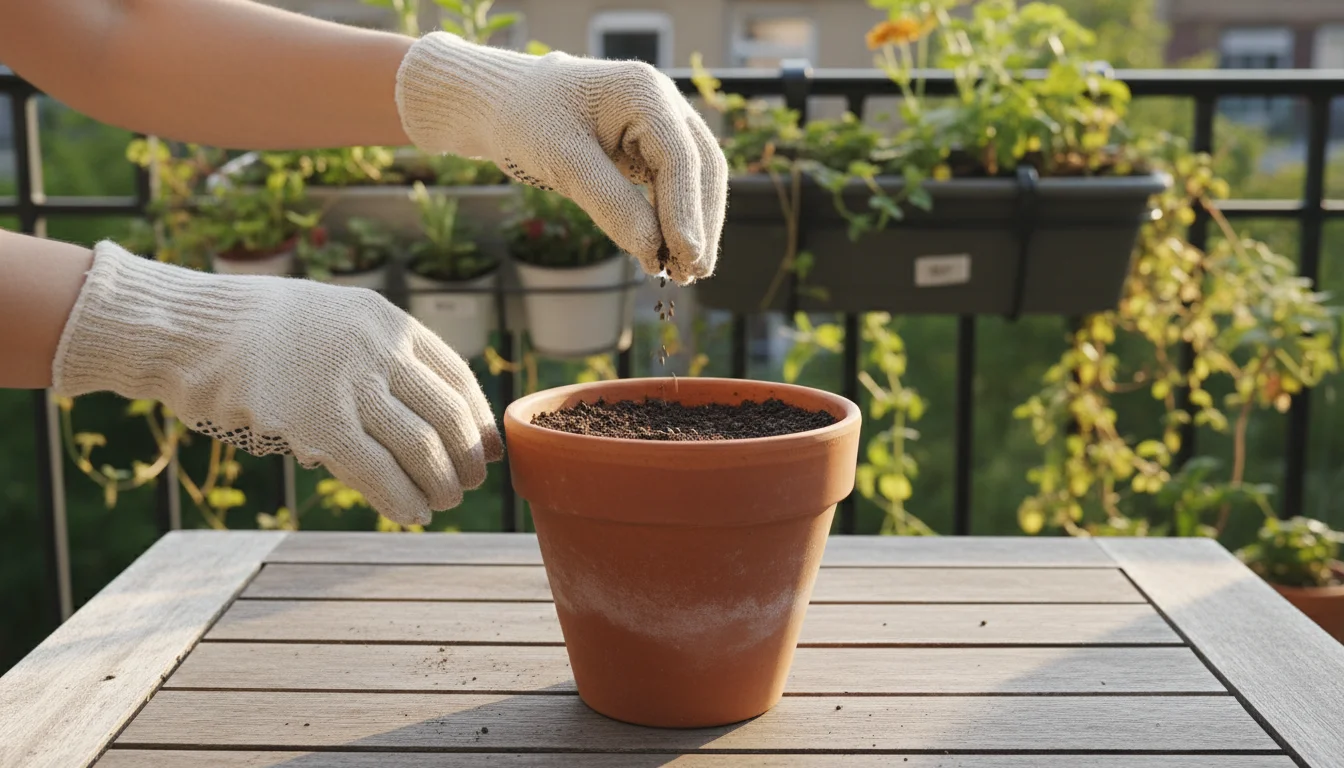
Natural Fibers:
- Cotton: Basic cotton gloves offer good breathability and absorbency, making them comfortable in warm weather. However, they provide minimal protection against thorns or punctures and absorb water quickly, losing their effectiveness when wet. They are best for very light tasks like seeding or handling dry, soft plant material.
- Bamboo: Similar to cotton, bamboo fibers offer superior breathability and moisture-wicking properties, keeping your hands cooler and drier than cotton. They are also naturally antimicrobial. Like cotton, they are best for light, dry tasks where high dexterity is needed, but they do not offer significant puncture protection.
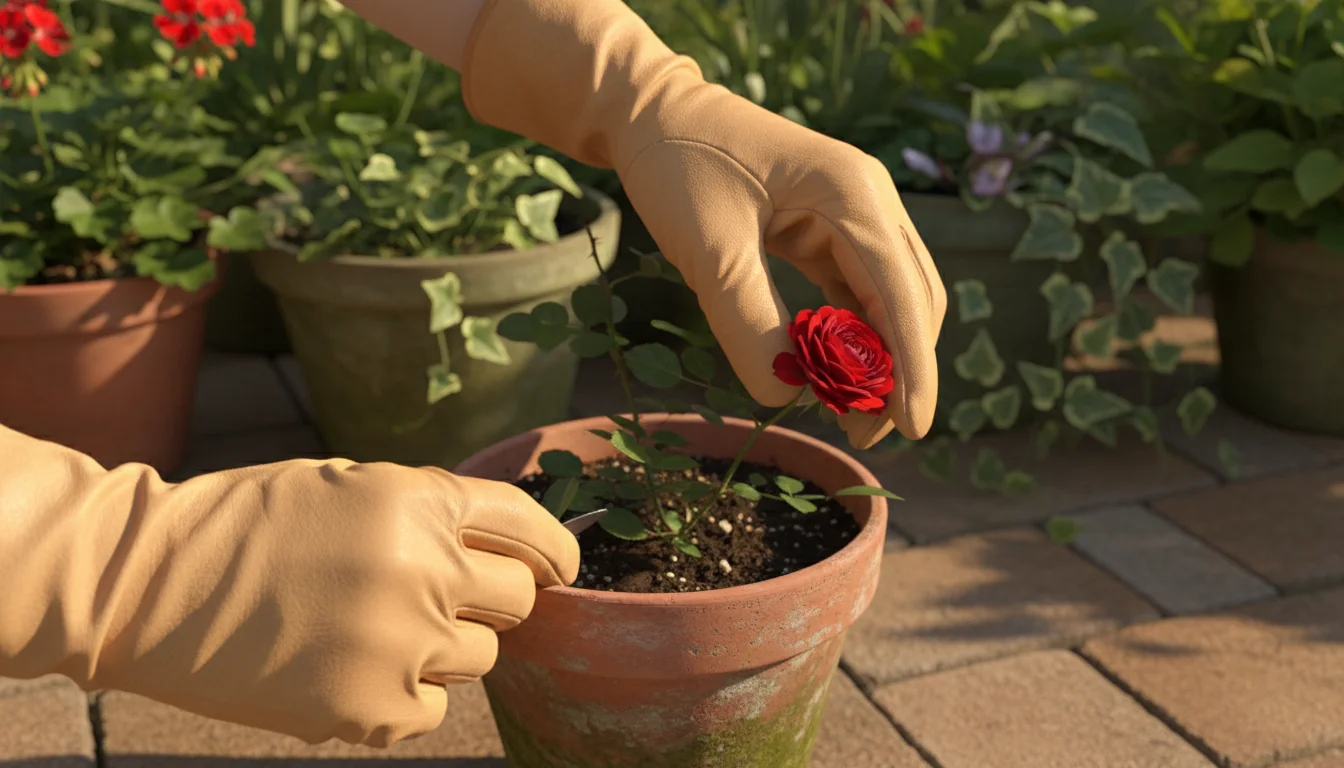
Leather Materials:
Leather gloves offer superior durability and puncture resistance, making them ideal for heavier tasks. The type of leather affects flexibility and feel.
- Cowhide: This is a common and affordable option. Cowhide is durable, offers good abrasion resistance, and provides solid protection against thorns and rough surfaces. It can be a bit stiff initially but softens with use.
- Goatskin: Goatskin leather is thinner and more supple than cowhide, offering superior dexterity while still providing excellent puncture resistance. This makes it a popular choice for tasks requiring fine motor skills, such as pruning roses or handling delicate plants with thorns. It is generally more expensive than cowhide but offers a better balance of protection and feel.
- Deerskin: Deerskin is exceptionally soft, flexible, and comfortable. It molds to your hands over time, providing a custom fit. While very comfortable, its puncture resistance is generally less than goatskin or cowhide, making it better for tasks where comfort is paramount and significant thorn protection is not the main concern.
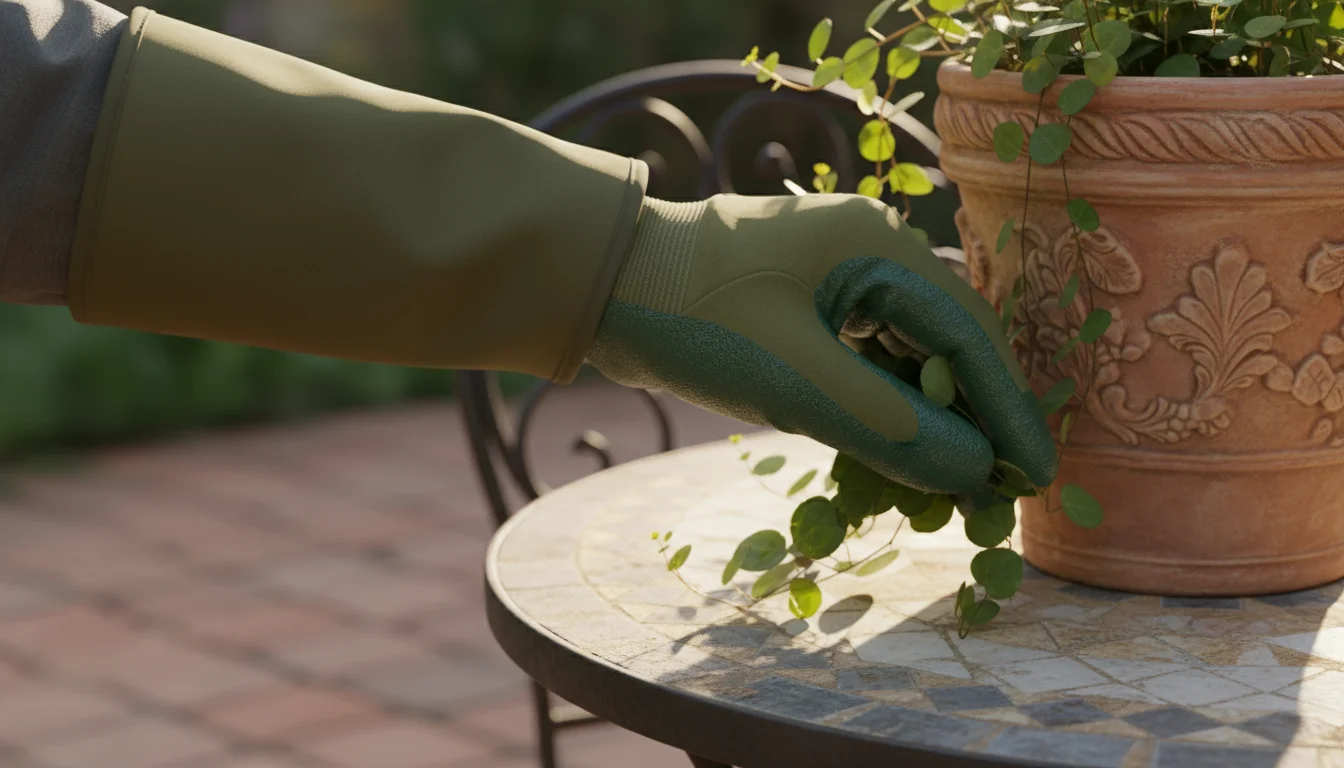
Glove Construction:
Beyond the primary material, how a glove is constructed impacts its performance.
- Coated Palms: Many gloves feature breathable fabric backs and coated palms. This combination provides dexterity and comfort on the back of the hand while offering grip and protection where it is most needed.
- Reinforced Fingertips: Look for gloves with extra material or padding on the fingertips. This area experiences a lot of wear and tear, and reinforcement extends the glove’s lifespan and protects your nails.
- Cuffs: Cuffs vary in length and style. A shorter knit cuff keeps debris out but offers less wrist protection. Gauntlet-style cuffs extend further up the forearm, providing critical protection when working with thorny bushes or reaching into dense foliage, preventing scratches and insect bites on your lower arms.
By understanding these materials and construction details, you can begin to identify which types of gardening gloves will best serve your specific needs, whether you are repotting herbs or pruning a thorny dwarf rose.
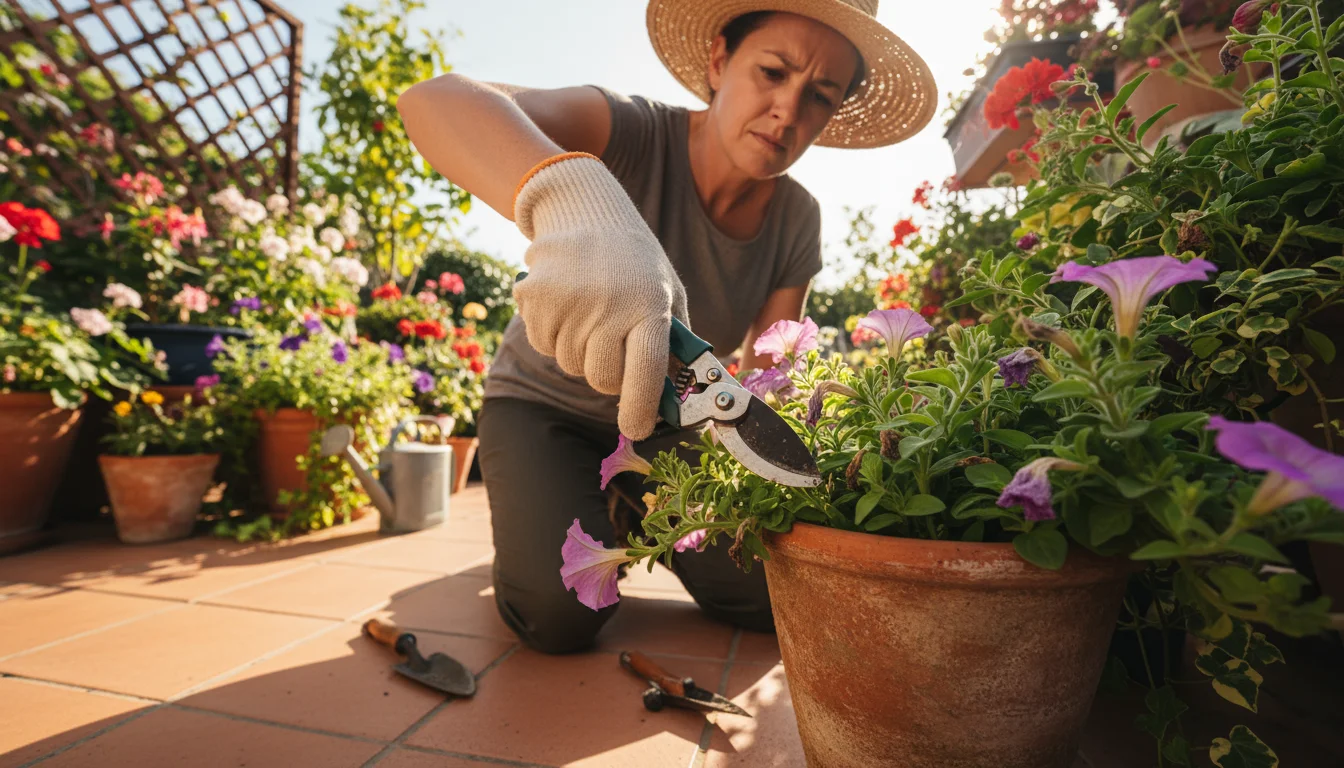
Finding Your Perfect Fit and Grip
You might think any glove will do, but a poorly fitting glove can be more detrimental than no glove at all. The right fit directly impacts your dexterity, comfort, and safety. A glove that is too large can slip, reduce your grip on tools, and even snag on branches. One that is too small restricts movement, causes fatigue, and can tear easily. Achieving the perfect fit means finding a balance between snugness and freedom of movement.
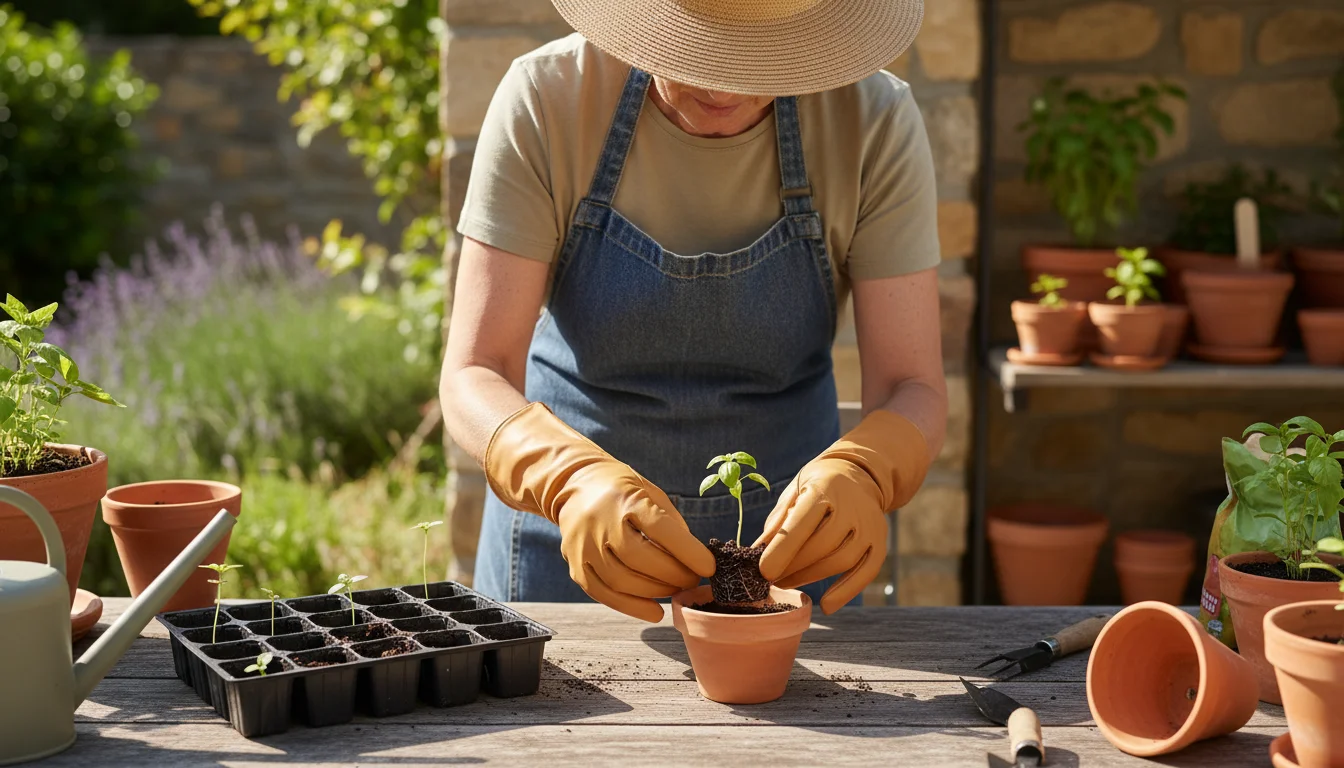
The Importance of a Proper Fit:
- Dexterity: For small-space gardening, you often perform intricate tasks like transplanting seedlings, tying up vines, or harvesting small vegetables. A glove that fits well allows your fingers to move freely, maintaining your fine motor skills. Loose gloves make these tasks clumsy, increasing the risk of damaging plants or injuring yourself.
- Comfort: You want to wear your gloves for extended periods without discomfort. A well-fitting glove minimizes bunching, rubbing, and pressure points, preventing blisters and fatigue. Gloves that are too tight can cut off circulation, making your hands feel cold or tingly.
- Safety: Loose gloves can snag on thorns or tools, potentially causing accidents. They also offer less effective protection if the material bunches up, creating gaps for debris or sharp objects to penetrate. A snug fit ensures the protective material stays where it needs to be.
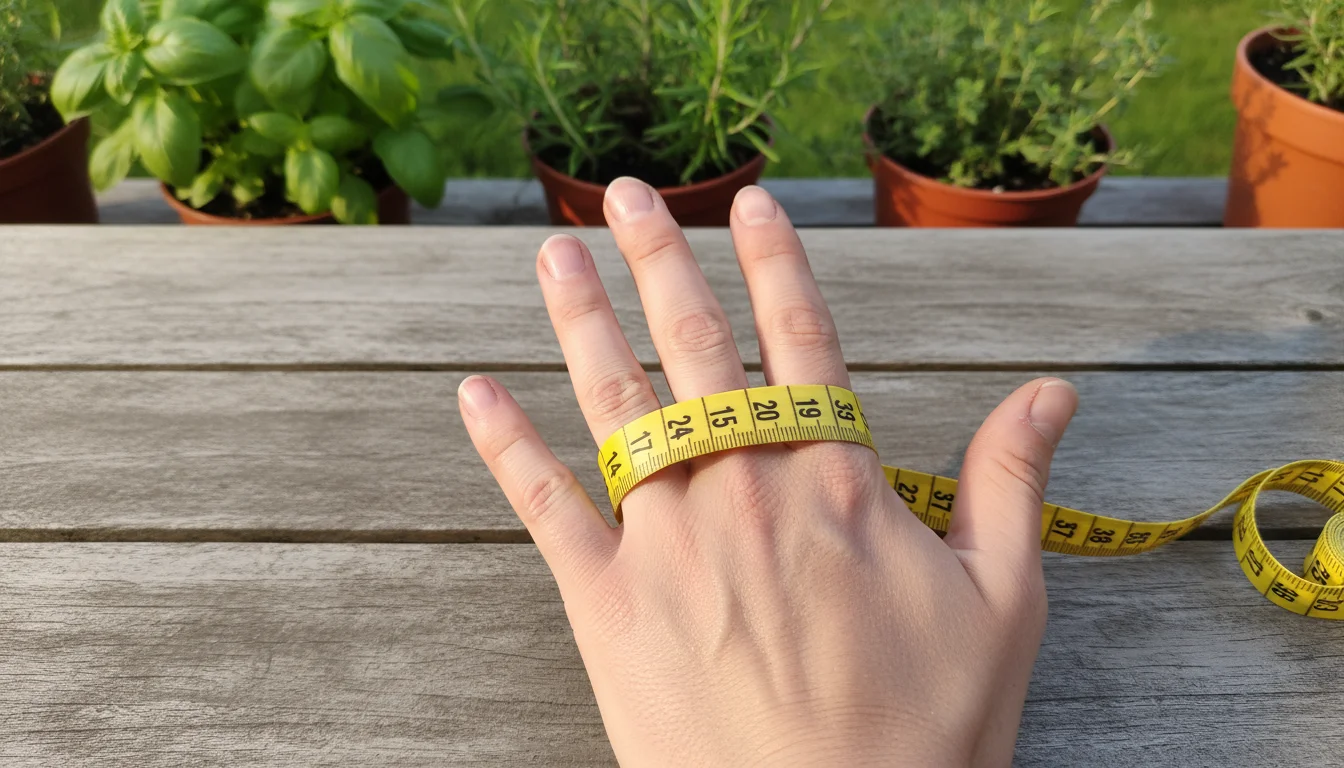
How to Measure for Your Gloves:
Most glove manufacturers provide sizing charts. To find your size, you typically need two measurements:
- Hand Circumference: Use a flexible measuring tape. Wrap it around the widest part of your dominant hand, just below your knuckles, excluding your thumb. This measurement is usually the primary determinant of glove size.
- Hand Length: Measure from the base of your palm (where your hand meets your wrist) to the tip of your longest finger. Some charts also include this for a more precise fit, especially for gloves with longer fingers.
Compare these measurements to the brand’s sizing chart. Remember that sizes can vary slightly between manufacturers, so always check the specific chart for the gloves you are considering. When trying on gloves, ensure you can comfortably make a fist, spread your fingers, and pick up small objects. There should be a small amount of space at the fingertips, but not so much that the material bunches.
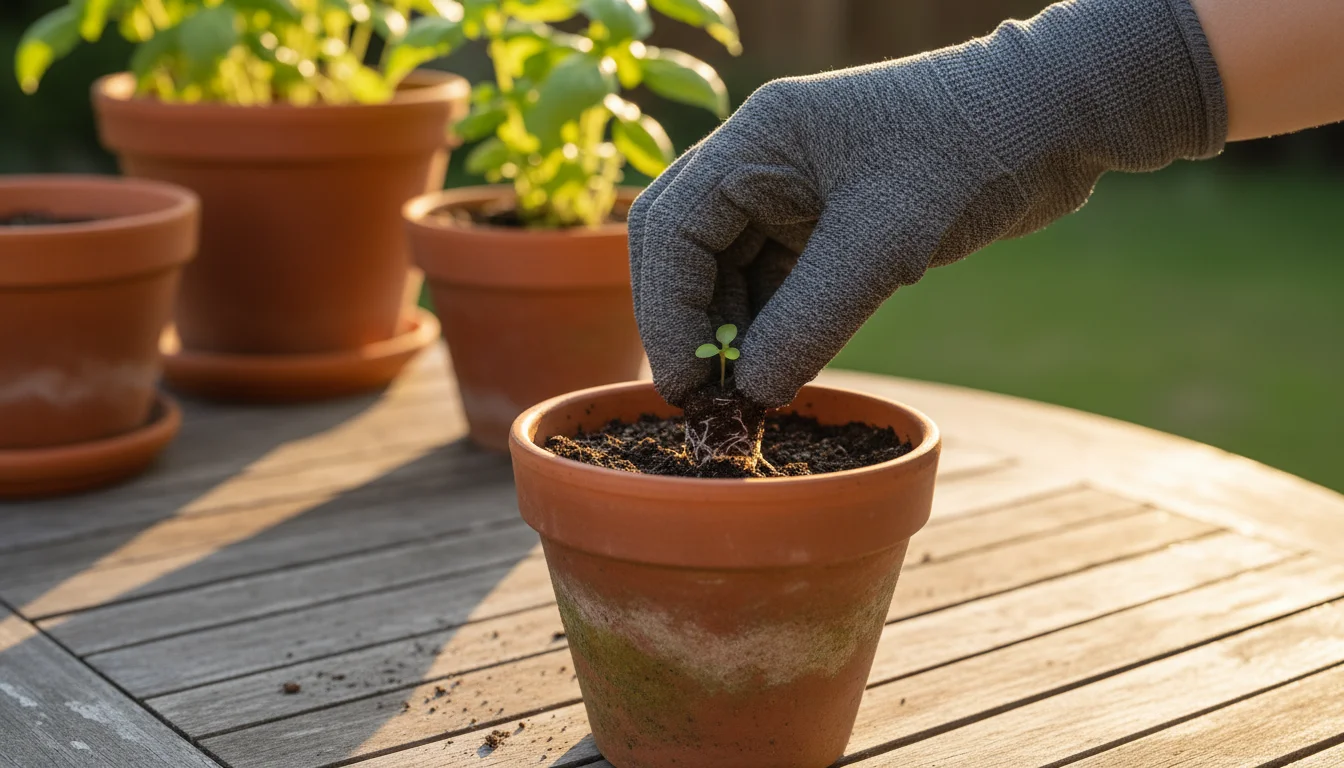
Grip and Tactile Feel:
Beyond fit, the grip a glove provides is crucial for safety and efficiency. Different coatings and materials offer varying levels of grip.
- Textured Coatings: Gloves with textured nitrile or latex coatings on the palms and fingers provide excellent grip on tools, even when wet. This is especially beneficial when handling plastic pots, metal tools, or slick plant stems.
- Leather Gloves: While inherently grippy, leather can become slippery when wet, especially smooth varieties. Some leather gloves incorporate textured patches or synthetic palms to improve wet grip.
- Tactile Feedback: A good glove should allow you to “feel” what you are doing. Thinner, more flexible materials or coatings offer better tactile feedback, which is important for delicate tasks like handling seeds or fine pruning. Too much padding can diminish this sense, making precise work difficult.
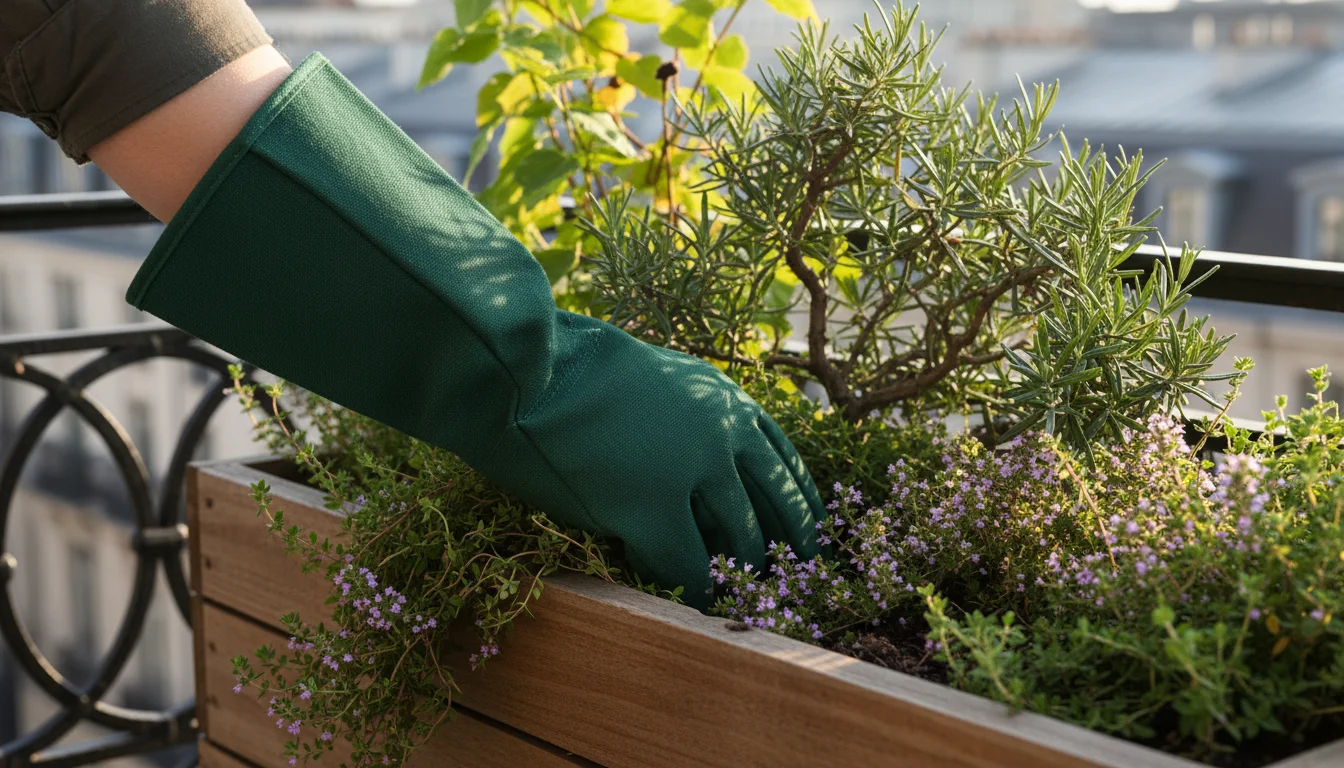
Cuff Length Considerations:
The cuff length impacts protection and comfort.
- Short Cuffs (Knit Cuffs): These are common on lightweight, general-purpose gloves. They offer minimal wrist protection but allow for maximum wrist mobility and keep debris from falling inside the glove. They are good for potting or light weeding.
- Long Cuffs (Gauntlet Cuffs): Extending several inches up the forearm, gauntlet cuffs provide superior protection against thorns, scratches, and insect bites. They are essential when working with roses, prickly shrubs, or reaching deep into dense foliage. These cuffs often have an elasticized opening or an adjustable strap to ensure a snug fit around the forearm, preventing debris from entering.
By prioritizing proper fit, understanding grip characteristics, and choosing appropriate cuff lengths, you elevate your gardening experience, making it safer, more comfortable, and ultimately more productive.
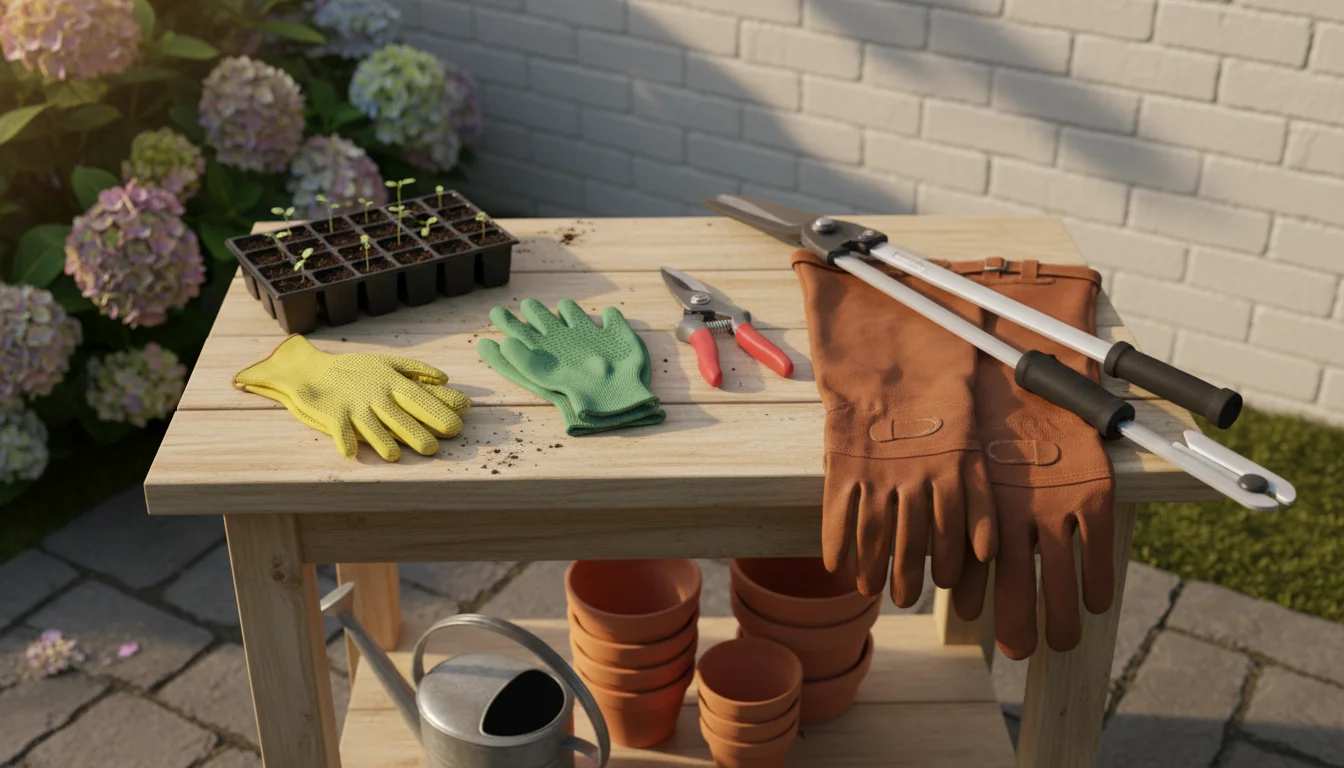
Glove Types for Common Small Garden Tasks
Your small garden may have a limited footprint, but it still demands a range of tasks. You will transition from delicate seeding to robust pruning, and each job benefits from a specific type of glove. Matching the right glove to the task ensures optimal protection, comfort, and efficiency. Here, we break down common glove categories and their ideal applications in a compact gardening setting.
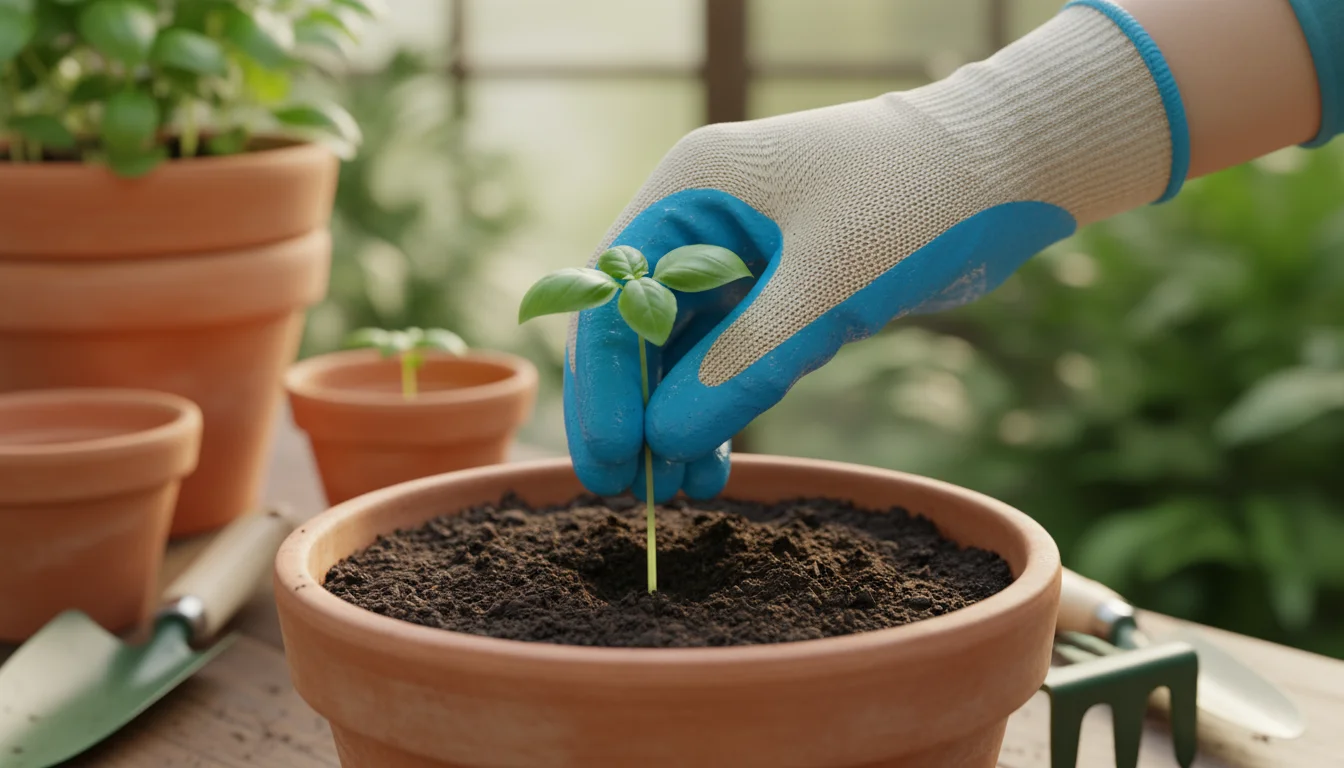
1. Light Duty/General Purpose Gloves:
- Description: These are typically lightweight, breathable gloves, often made from nylon or bamboo with a nitrile or latex coating on the palm and fingers. They are flexible and offer excellent dexterity.
- Best For:
- Potting and Repotting: Handling soil, filling containers, and gently setting plants without getting hands excessively dirty.
- Seeding and Transplanting: Delicate tasks requiring fine motor skills, like handling small seeds or carefully moving young seedlings.
- Light Weeding: Pulling small, non-thorny weeds from beds or containers.
- Harvesting Herbs and Leafy Greens: Picking vegetables and herbs where minimal protection is needed but clean hands are desired.
- Why They Excel: They offer good tactile feel, allowing you to manipulate small items. The coating provides a decent grip and keeps hands relatively clean and dry. They are comfortable for extended wear in warm weather.
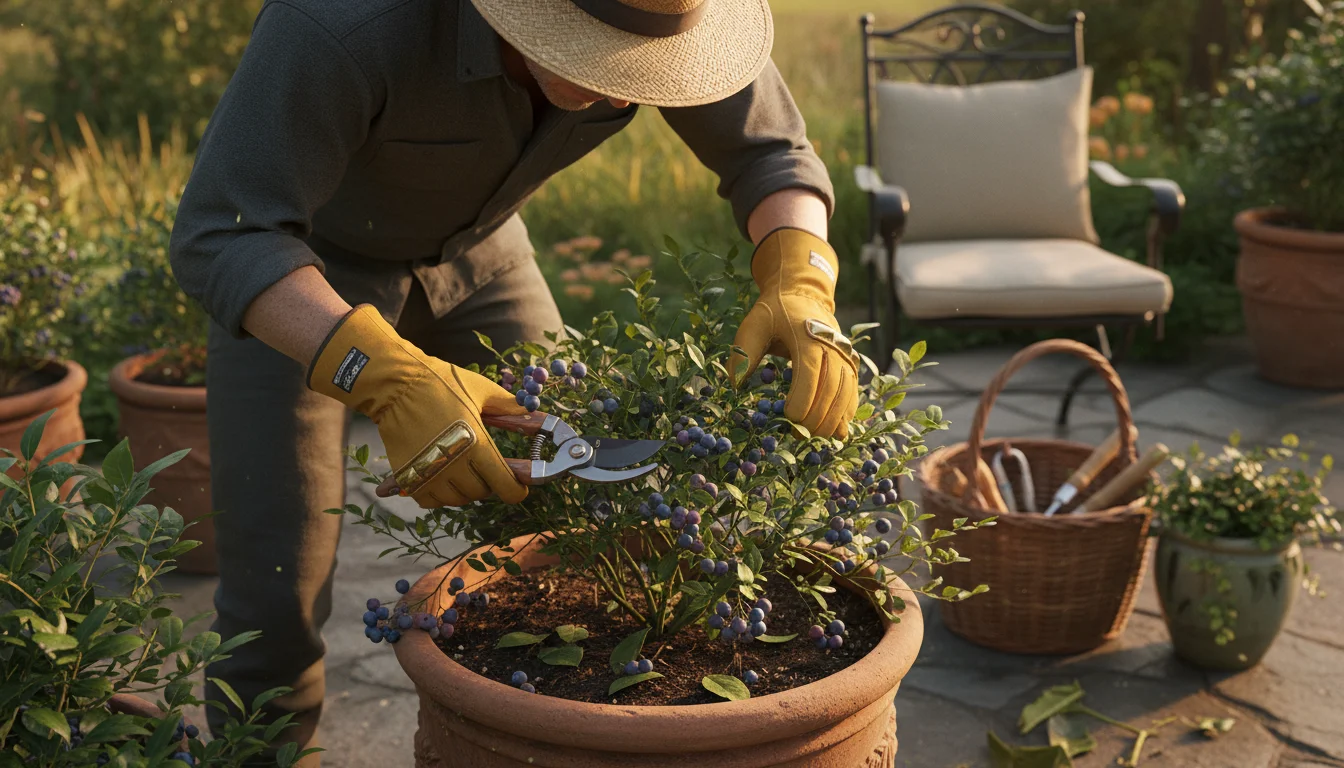
2. Medium Duty/Pruning Gloves:
- Description: These gloves offer more robust protection than light-duty options. They often feature a thicker nitrile coating, a blend of synthetic and leather materials, or entirely goatskin leather. They might have reinforced fingertips.
- Best For:
- General Pruning: Handling small to medium-sized branches with hand pruners, protecting against minor nicks and sap.
- Working with Thorny Plants (Mild): Ideal for tasks around plants with small thorns, like some types of compact roses or berry bushes, where you need dexterity.
- Digging and Planting: More substantial digging in raised beds or larger containers where you encounter roots or rough soil.
- Handling Rough Materials: Moving small rocks, mixing compost, or spreading mulch.
- Why They Excel: They strike a balance between protection and flexibility. The enhanced durability resists punctures from moderate thorns and abrasive surfaces, while still allowing enough finger movement for precision work. Goatskin leather provides excellent protection with good dexterity.
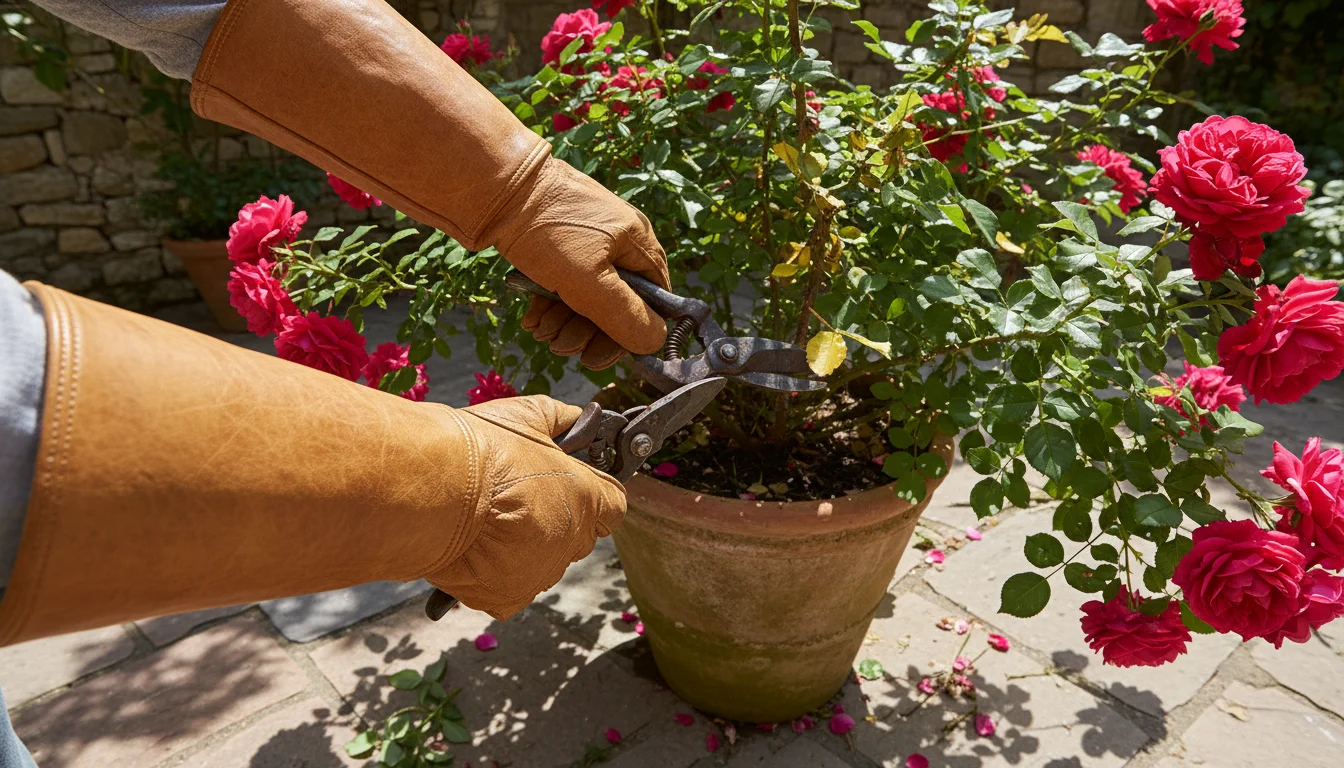
3. Heavy Duty/Rose Gloves:
- Description: These are the champions of protection, typically made from sturdy cowhide or thicker goatskin leather, often extending up the forearm with gauntlet cuffs. They prioritize puncture and abrasion resistance over fine dexterity.
- Best For:
- Pruning Thorny Roses and Shrubs: Essential for protecting your hands and forearms from severe thorn punctures.
- Clearing Overgrown Areas: Tackling dense, woody growth in your small space, or dealing with plants that have sharp leaves or stems.
- Handling Cactus or Succulents with Spines: If your small garden includes these, heavy-duty gloves are a must.
- Moving Heavy Debris: Lifting rough branches or working with construction materials during a garden renovation.
- Why They Excel: Their thick material and extended cuffs offer unparalleled protection against the most aggressive thorns and sharp edges. While they reduce dexterity, the trade-off is worthwhile for high-risk tasks, preventing serious injury.
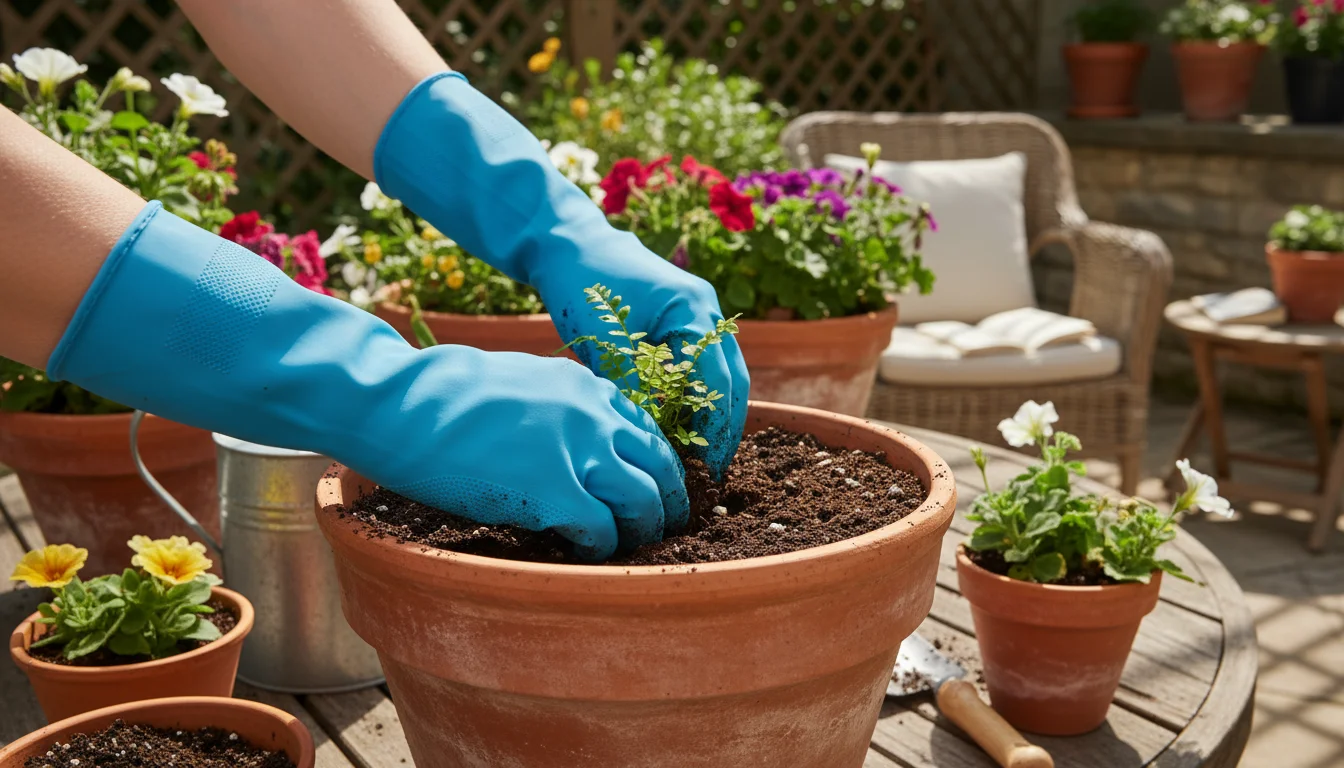
4. Waterproof/Wet Conditions Gloves:
- Description: Made from materials like neoprene, natural rubber, or sometimes a heavily coated synthetic, these gloves are designed to keep your hands completely dry.
- Best For:
- Watering and Irrigation Setup: Adjusting drip lines, handling watering cans, or working with hoses without getting your hands soaked.
- Working in Muddy Soil: Essential for planting or repotting in very wet conditions, or clearing muddy drains.
- Cleaning Pond Filters or Water Features: Protecting hands from dirty water and potential aquatic irritants.
- Applying Liquid Fertilizers or Pest Control: Creating a barrier against chemical contact (always check product labels for specific PPE).
- Why They Excel: They prevent water from reaching your skin, maintaining comfort and warmth in wet environments. They are often easy to clean and resist absorption of liquids.
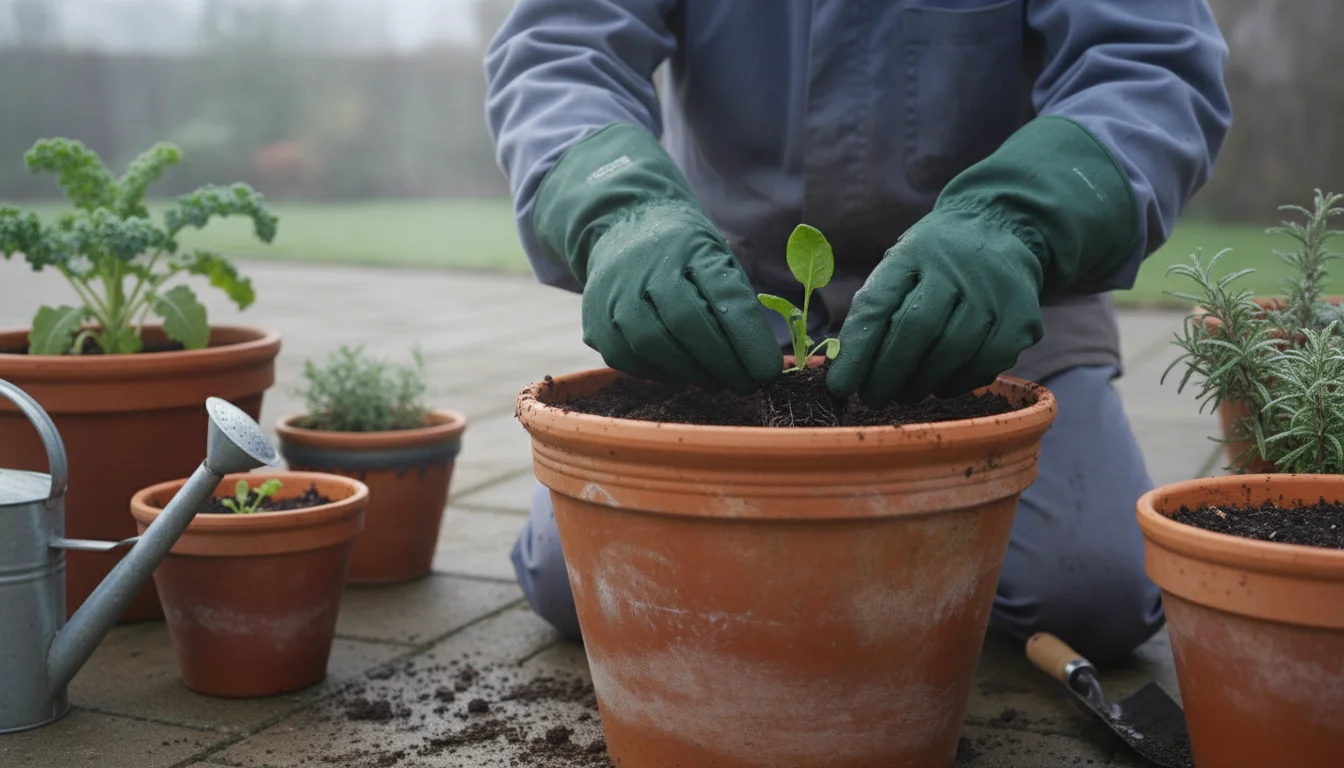
5. Cold Weather Gardening Gloves:
- Description: These gloves feature insulation, often a fleece or thermal lining, beneath a water-resistant or waterproof outer layer.
- Best For:
- Winter or Early Spring Tasks: Planting cold-hardy greens, checking on dormant plants, or preparing beds when temperatures are low.
- Working with Cold, Damp Soil: Protecting hands from the chilling effects of wet earth during cooler months.
- Why They Excel: They keep your hands warm and comfortable, allowing you to extend your gardening season into cooler weather without discomfort. Look for models that still offer decent dexterity for the tasks you need to perform.
By building a small collection of these specialized gardening gloves, you ensure you always have the right protection for any task your small garden throws your way. This approach maximizes both your safety and your gardening enjoyment, making your gardening gloves an indispensable part of your tool kit.
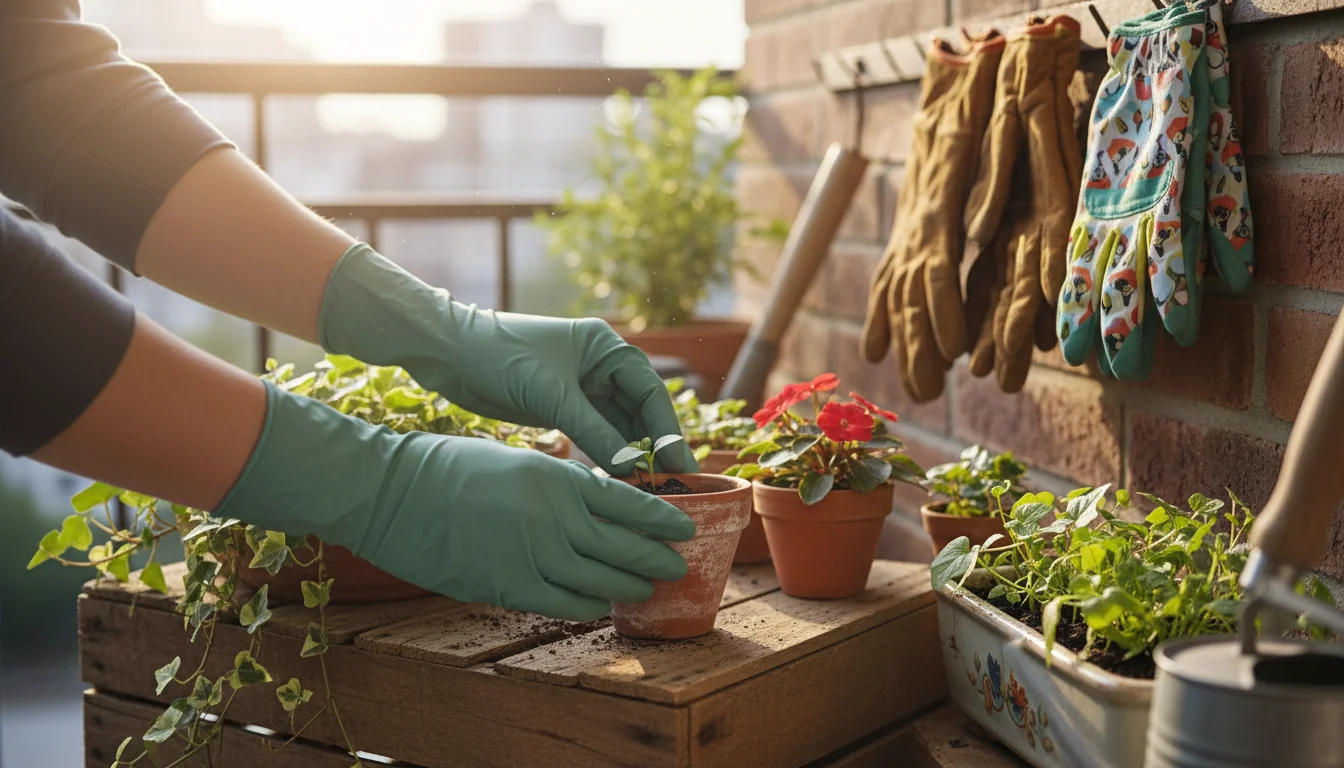
Glove-by-Task Recommendations: A Practical Guide
Choosing the best gloves for gardening means understanding that no single glove does everything perfectly. Your gardening activities vary, and so should your glove selection. This practical guide presents a table outlining common small-space gardening tasks and the types of gloves best suited for each, helping you make informed decisions.
| Common Small Garden Task | Recommended Glove Type(s) | Key Features to Look For | Why This Choice Works |
|---|---|---|---|
| Seeding & Transplanting | Light Duty/General Purpose (Nitrile/Nylon, Bamboo/Nitrile) | High dexterity, snug fit, good tactile feel, breathable back. | Allows precise handling of small seeds and delicate seedlings without crushing them. Keeps hands clean. |
| Potting & Repotting | Light Duty/General Purpose (Nitrile/Nylon), Medium Duty (Thicker Nitrile, Goatskin) | Good grip on pots, moderate dirt/moisture resistance, flexibility. | Protects against soil, dampness, and minor abrasions from containers. Maintains good grip on wet or dry pots. |
| General Weeding (Non-thorny) | Light Duty/General Purpose (Nitrile/Nylon, Bamboo/Nitrile) | Flexibility, grip for pulling weeds, reasonable hand protection. | Keeps hands clean and prevents minor scrapes, while allowing full range of motion for efficient weeding. |
| Pruning (Light, Herb Snips) | Light Duty/General Purpose (Nitrile/Nylon), Goatskin Leather | High dexterity, good finger control, protection against sap and minor nicks. | Enables precise cuts with snips or small bypass pruners, protecting from sticky sap and accidental cuts. |
| Pruning Thorny Plants (Roses, Berries) | Heavy Duty/Rose Gloves (Cowhide, Thick Goatskin with Gauntlet Cuffs) | Exceptional puncture resistance, thick material, extended forearm protection. | Essential for preventing deep punctures and scratches from aggressive thorns, safeguarding hands and forearms. |
| Digging & Soil Amendments | Medium Duty (Thicker Nitrile/Nylon, Goatskin), Heavy Duty (Cowhide) | Durability, abrasion resistance, strong grip, moderate protection against sharp objects. | Withstands rough soil, roots, and potential debris. Prevents blisters and protects against sharp edges. |
| Watering & Working in Wet Soil | Waterproof/Wet Conditions Gloves (Neoprene, Rubber) | Fully waterproof, good grip when wet, keeps hands dry and warm. | Prevents hands from getting wet and cold, maintains comfort, and improves grip on wet tools or hoses. |
| Applying Fertilizers/Pest Control | Waterproof/Wet Conditions Gloves (Rubber, Neoprene, Thick Nitrile) | Chemical resistance (check specific product label), full hand coverage. | Protects skin from direct contact with chemicals, reducing absorption risks. Always follow manufacturer guidelines. |
| Cold Weather Gardening | Cold Weather Gardening Gloves (Insulated, Waterproof Outer) | Insulation for warmth, often waterproof, decent flexibility for the cold. | Keeps hands warm and dry, allowing you to work comfortably in lower temperatures, extending your gardening season. |
Remember, this table provides general guidance. Your specific needs might vary based on the plants you grow and your local conditions. Consider having at least two pairs of gardening gloves: a lighter pair for delicate work and a more robust pair for protection against thorns and heavier tasks. Investing in the right glove for each job saves you discomfort, prevents injury, and makes your gardening experience much more enjoyable.
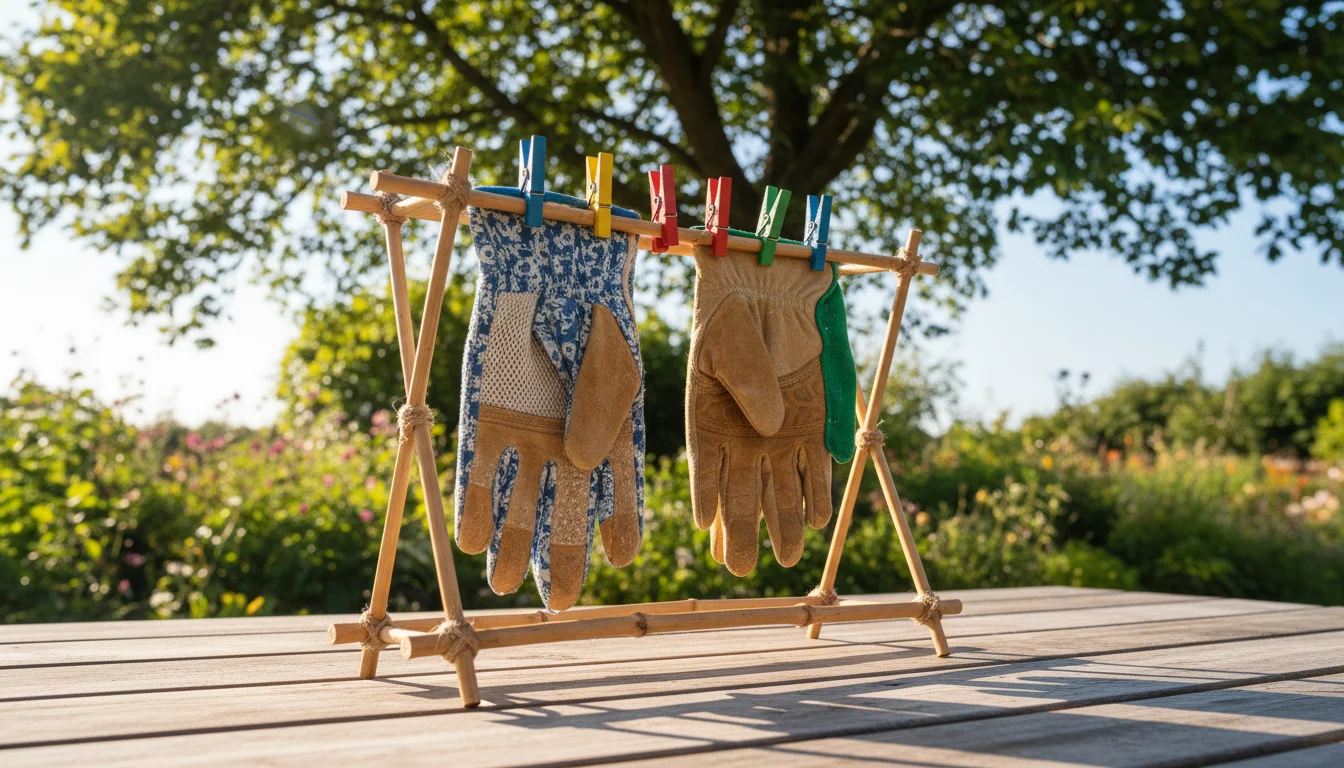
Caring for Your Gloves: Maintenance and Longevity
Your gardening gloves work hard, and just like any other tool, they benefit from proper care and maintenance. Cleaning and storing your gloves correctly extends their lifespan, keeps them hygienic, and ensures they are ready for your next gardening session. Neglecting glove care can lead to unpleasant odors, material degradation, and a shorter useful life, making it a critical aspect of your tool reviews.
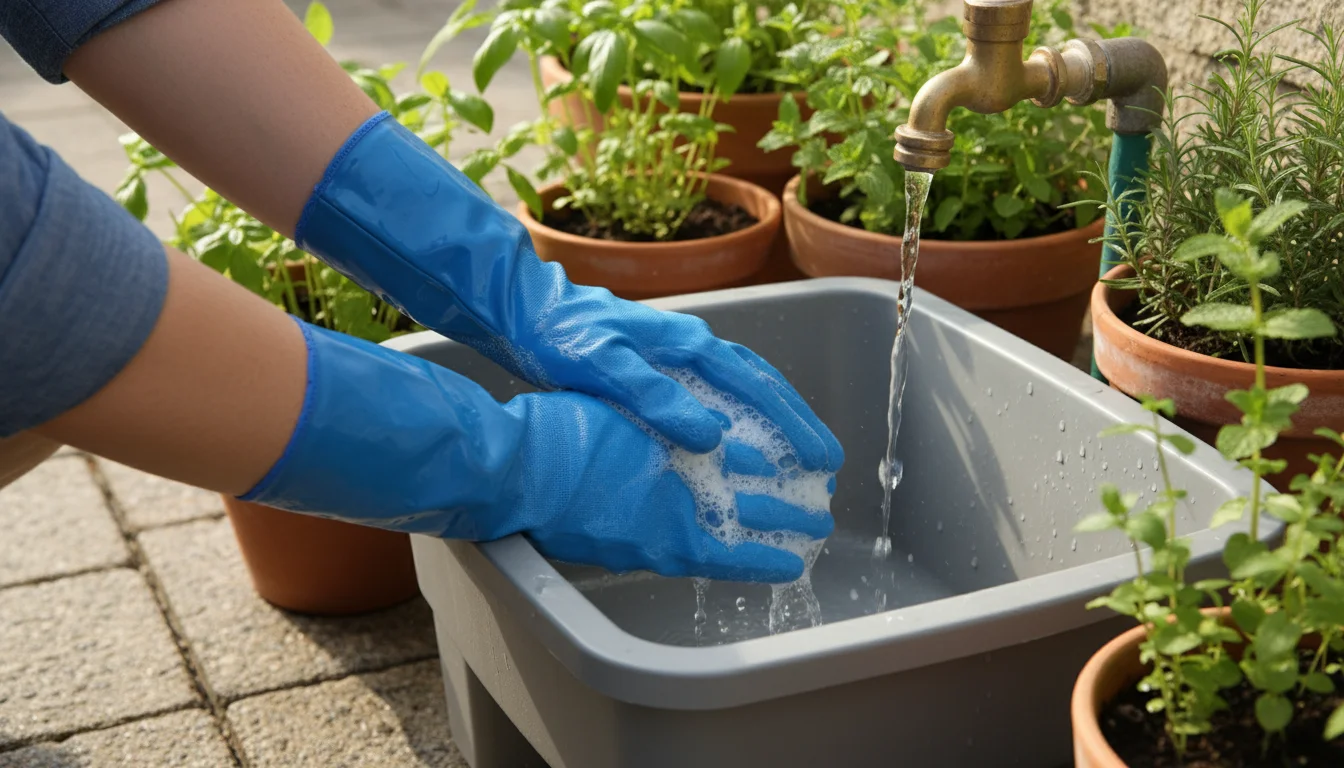
Cleaning Your Gardening Gloves:
The cleaning method depends largely on the glove material.
- Synthetic and Coated Gloves (Nitrile, Latex, Nylon, Bamboo Blends):
- Rinse Immediately: After use, rinse off loose dirt and debris under running water.
- Wash with Soap: For tougher grime, wash your gloved hands with mild soap and water, as if you were washing your bare hands. This helps remove embedded dirt and plant sap.
- Scrub Gently: Use a soft brush or your other gloved hand to gently scrub away stubborn dirt.
- Rinse Thoroughly: Ensure all soap residue is gone, as it can dry out materials.
- Air Dry: Squeeze out excess water without twisting. Hang them to air dry completely, ideally in a well-ventilated area away from direct sunlight or heat, which can degrade coatings. You can use clothespins or a glove dryer rack.
- Leather Gloves (Cowhide, Goatskin, Deerskin):
- Brush Off Dry Dirt: Never submerge leather gloves in water. Once dry, gently brush off any loose dirt or soil with a soft brush.
- Wipe Clean: For stubborn grime, dampen a cloth with a small amount of mild soap (like saddle soap) and gently wipe down the leather. Avoid soaking the leather.
- Rinse (Spot Clean): Use a clean, damp cloth to wipe off any soap residue.
- Air Dry Slowly: Shape the gloves and allow them to air dry slowly at room temperature. Avoid direct heat, which can make leather stiff and crack. You can put them on occasionally as they dry to help them retain their shape.
- Condition (Optional): Once dry, you can apply a small amount of leather conditioner to keep the material supple and prevent cracking. Follow the conditioner product instructions.
Important Note: Always check the manufacturer’s care instructions on your specific gloves, as some may have unique recommendations. If you have handled chemicals, ensure you follow appropriate decontamination procedures, possibly disposing of the gloves if they are not rated for chemical resistance.
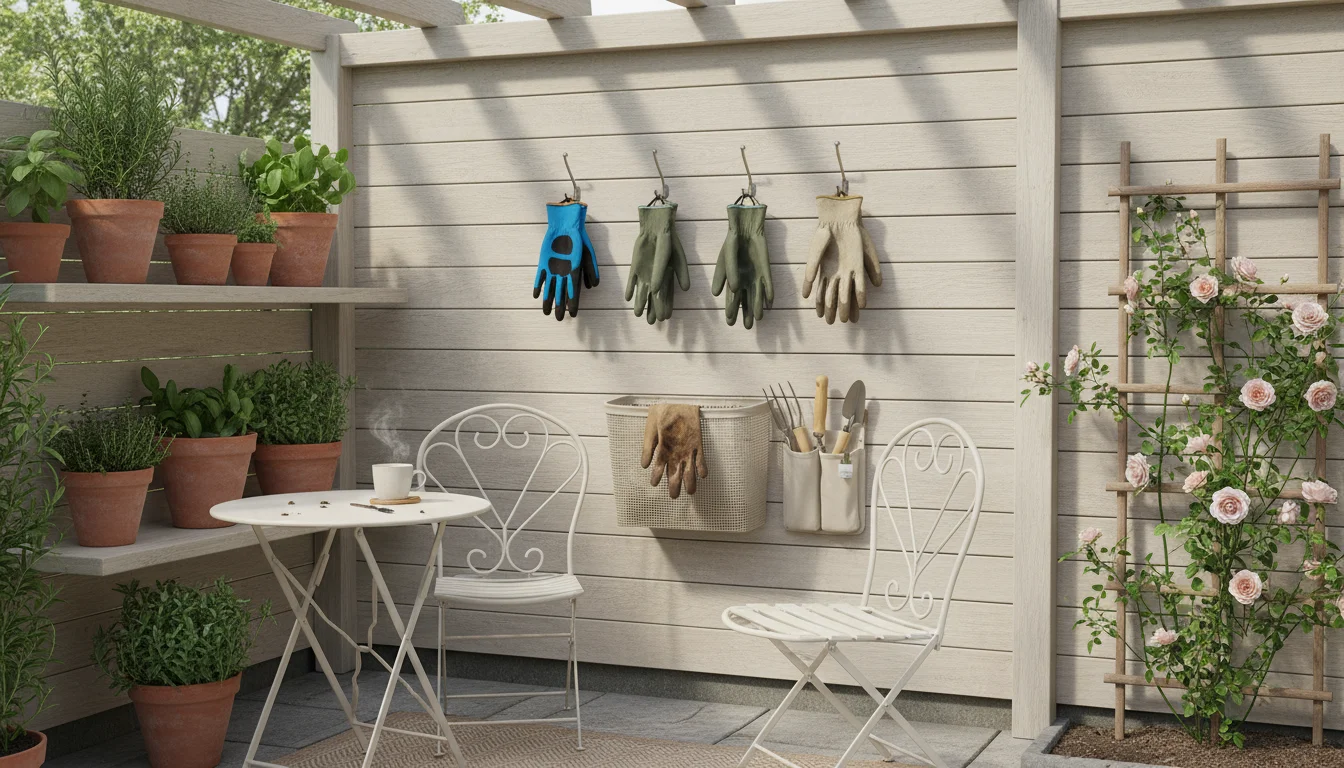
Storing Your Gloves in Small Spaces:
Proper storage prevents mildew, extends glove life, and keeps your small garden space tidy.
- Ensure They are Dry: Never store damp gloves. This leads to mildew, unpleasant odors, and material degradation.
- Hang Them Up: For small spaces, hanging is ideal. Use a simple hook on a wall, a pegboard, or a clothesline. This allows air circulation and prevents crushing.
- Utilize a Mesh Bag or Caddy: If hanging is not possible, a breathable mesh bag or a small, dedicated caddy allows for air circulation while keeping gloves together. Avoid sealing them in airtight plastic containers.
- Keep Away from Extreme Temperatures: Store gloves in a cool, dry place. Extreme heat can cause synthetic materials to become brittle and leather to crack, while extreme cold can stiffen materials.
- Dedicated Spot: Designate a specific spot for your gardening gloves. This keeps them organized and easily accessible for your next task.
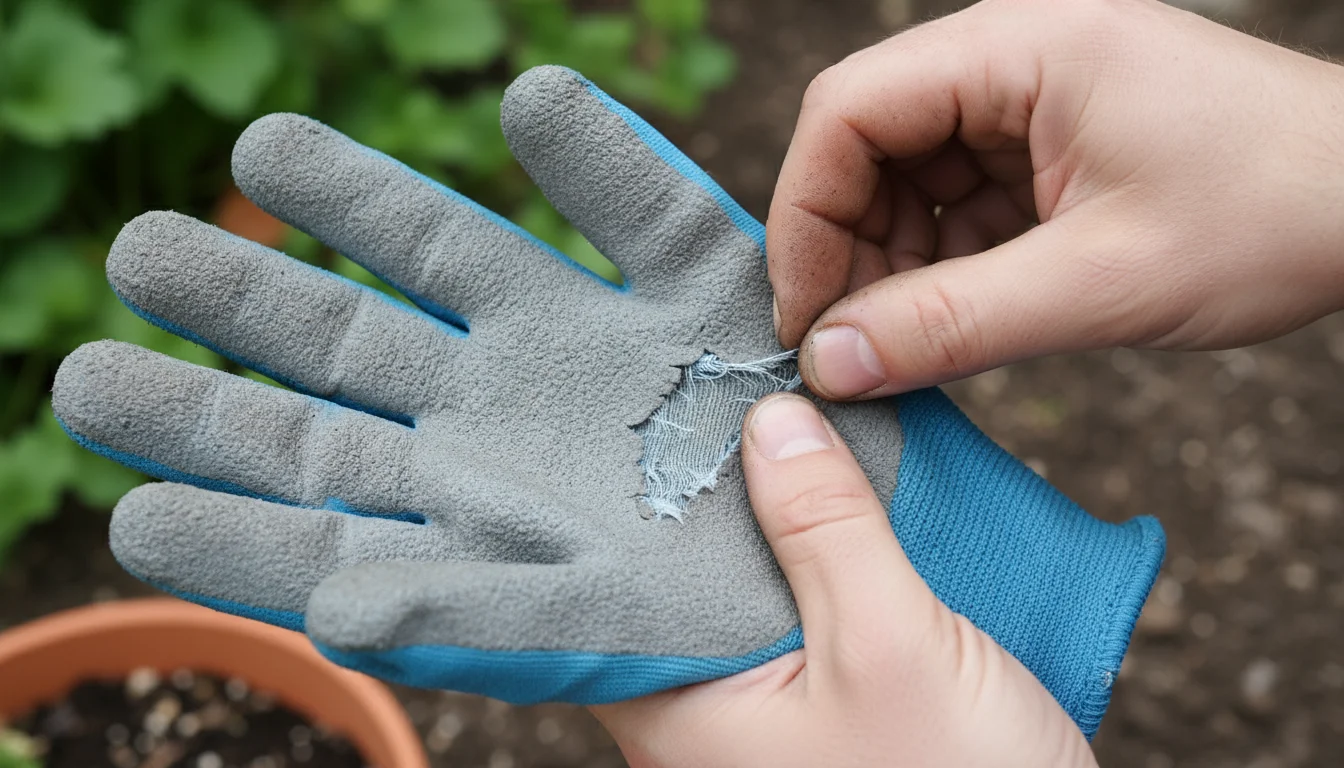
Inspecting for Wear and Tear:
Regularly inspect your gloves for signs of wear.
- Holes or Tears: Even small holes compromise protection.
- Thinning Material: Areas that are becoming thin will soon develop holes.
- Loss of Grip: If coatings are peeling or wearing off, the glove’s grip and protection diminish.
- Stiffness or Cracking: For leather gloves, severe stiffness or cracking indicates the leather is breaking down and losing its protective qualities.
Replace gloves when they show significant wear. Continuing to use compromised gloves can lead to injury or discomfort, defeating the purpose of wearing them in the first place. By dedicating a few minutes to proper care after each use, your gardening gloves will serve you well for many seasons.
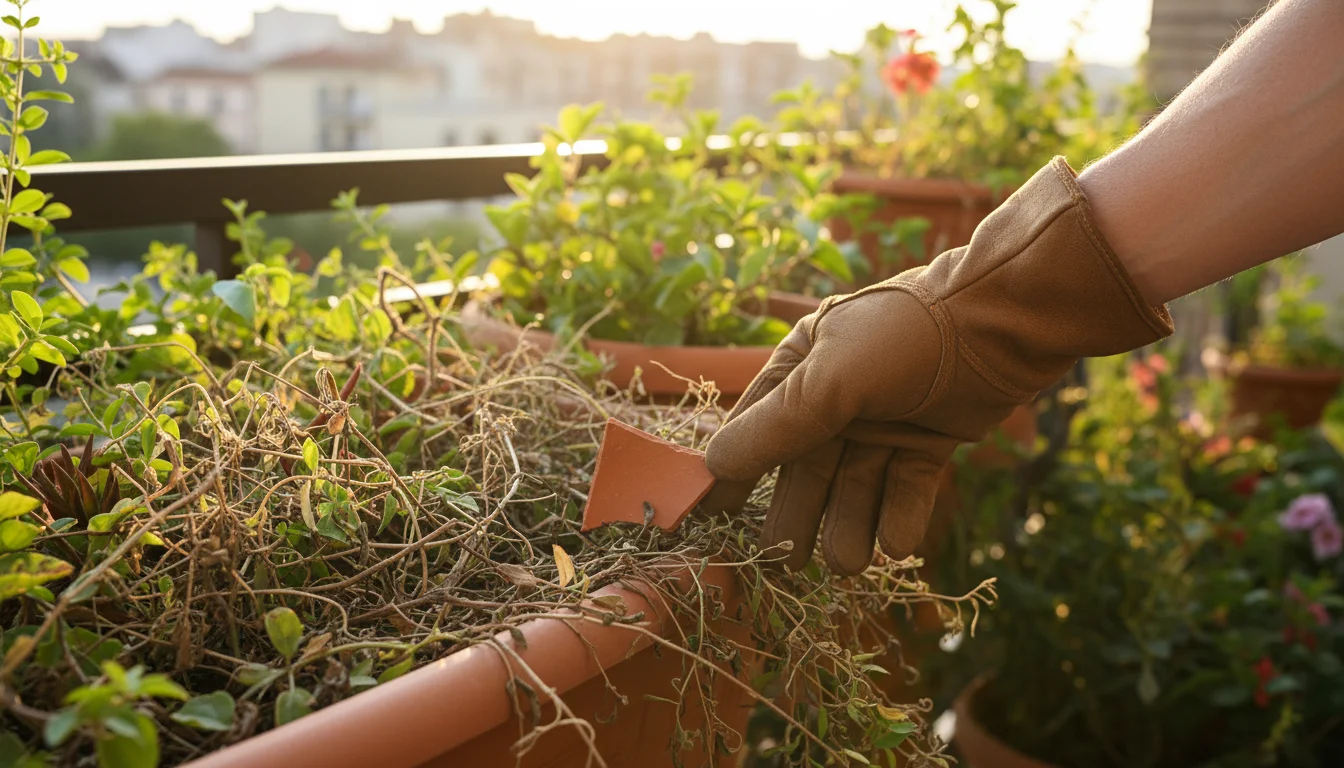
Safety First with Gardening Gloves
While gardening offers tranquility and rewards, it also presents potential hazards. Your gardening gloves are a primary line of defense, but their effectiveness depends on how you use and maintain them. Prioritizing safety ensures that your gardening remains a joyful and healthy activity. Here are key safety practices related to your gardening gloves.
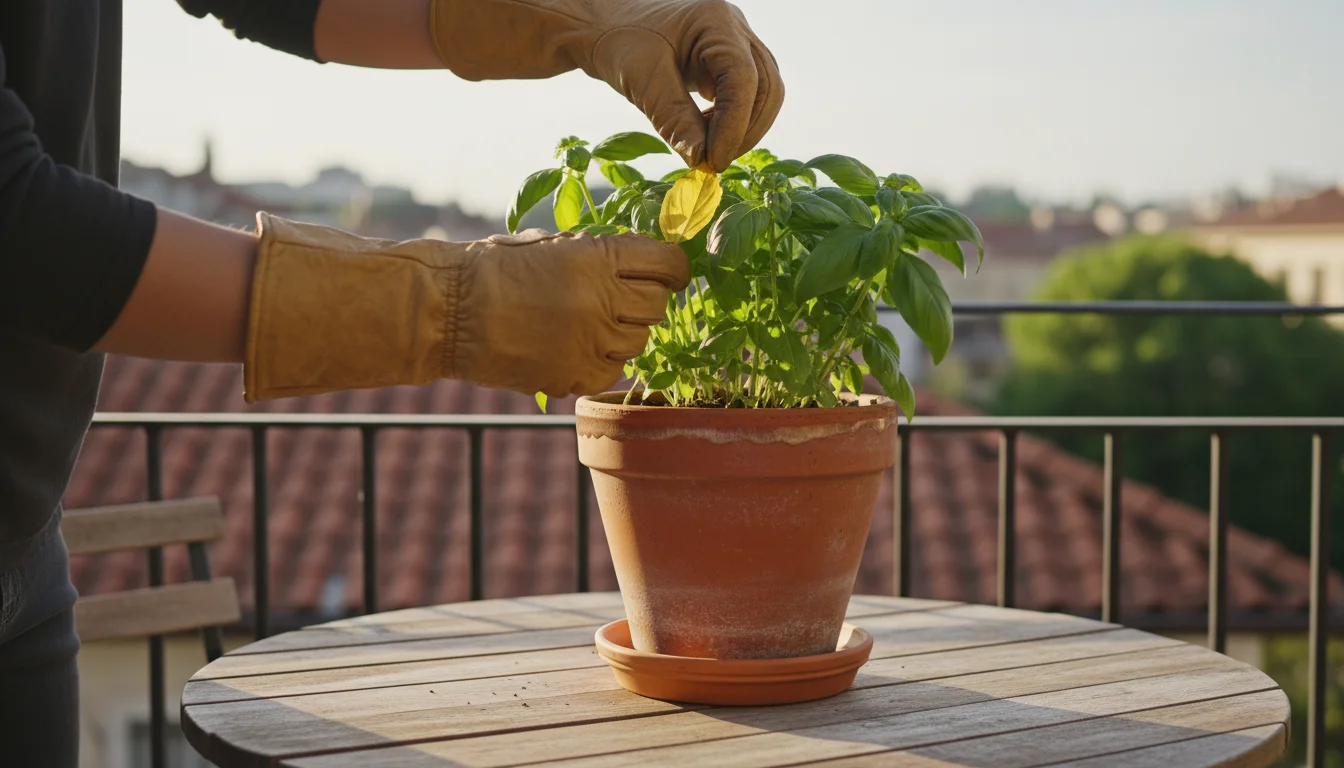
Always Wear Your Gloves:
This seems obvious, yet many gardeners omit gloves for “quick” tasks. Even a few minutes of exposure can lead to splinters, irritations, or contact with harmful substances. Make wearing gloves a habit for every gardening activity, no matter how small or seemingly benign. This consistent practice protects your skin from the minor scrapes to significant threats.
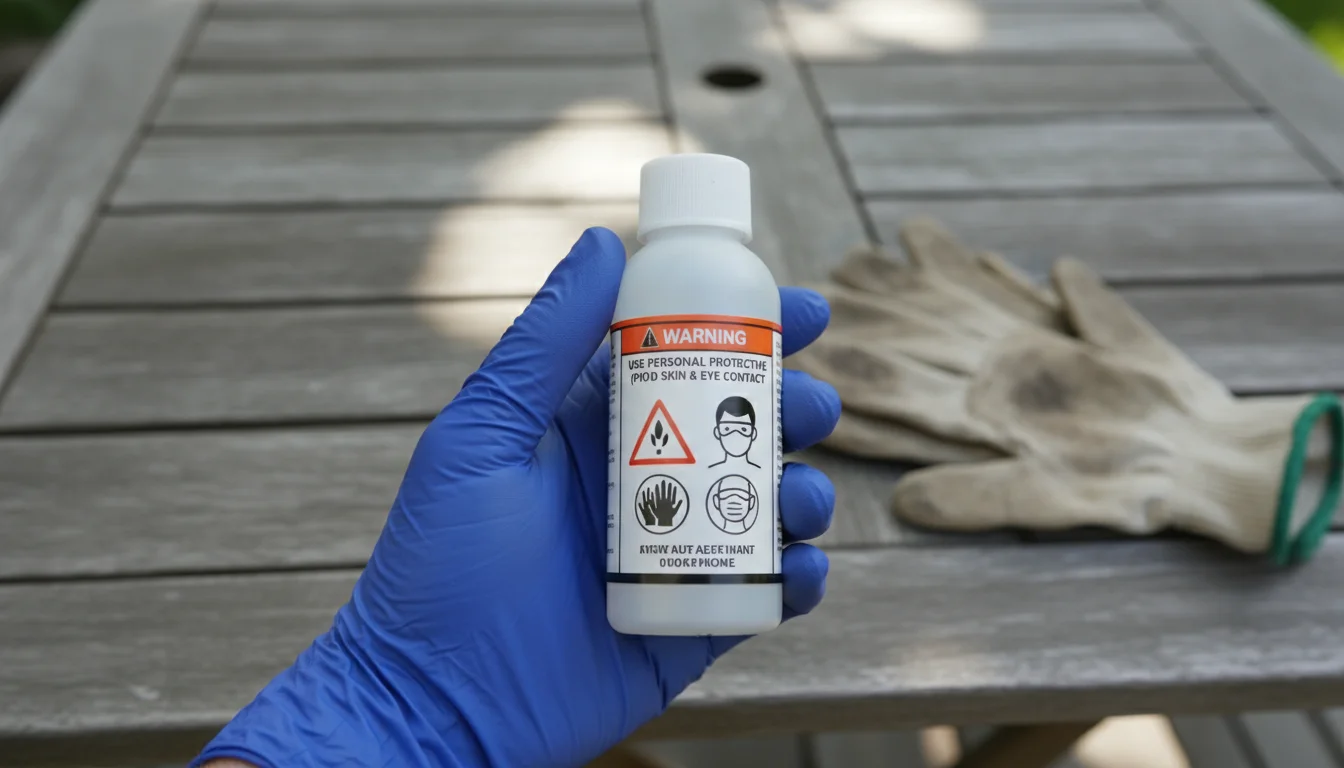
Protect Against Chemicals:
When working with garden chemicals, such as fertilizers, pesticides, or even strong cleaning agents for your tools, always check the product label for specific personal protective equipment (PPE) recommendations. Some chemicals require specific types of gloves, such as chemical-resistant rubber or nitrile gloves, which offer a higher level of barrier protection than standard gardening gloves. Never use gloves that have come into contact with strong chemicals for regular gardening tasks afterward, as residues can transfer to your skin or plants. Dispose of chemically contaminated gloves according to local guidelines and product instructions.
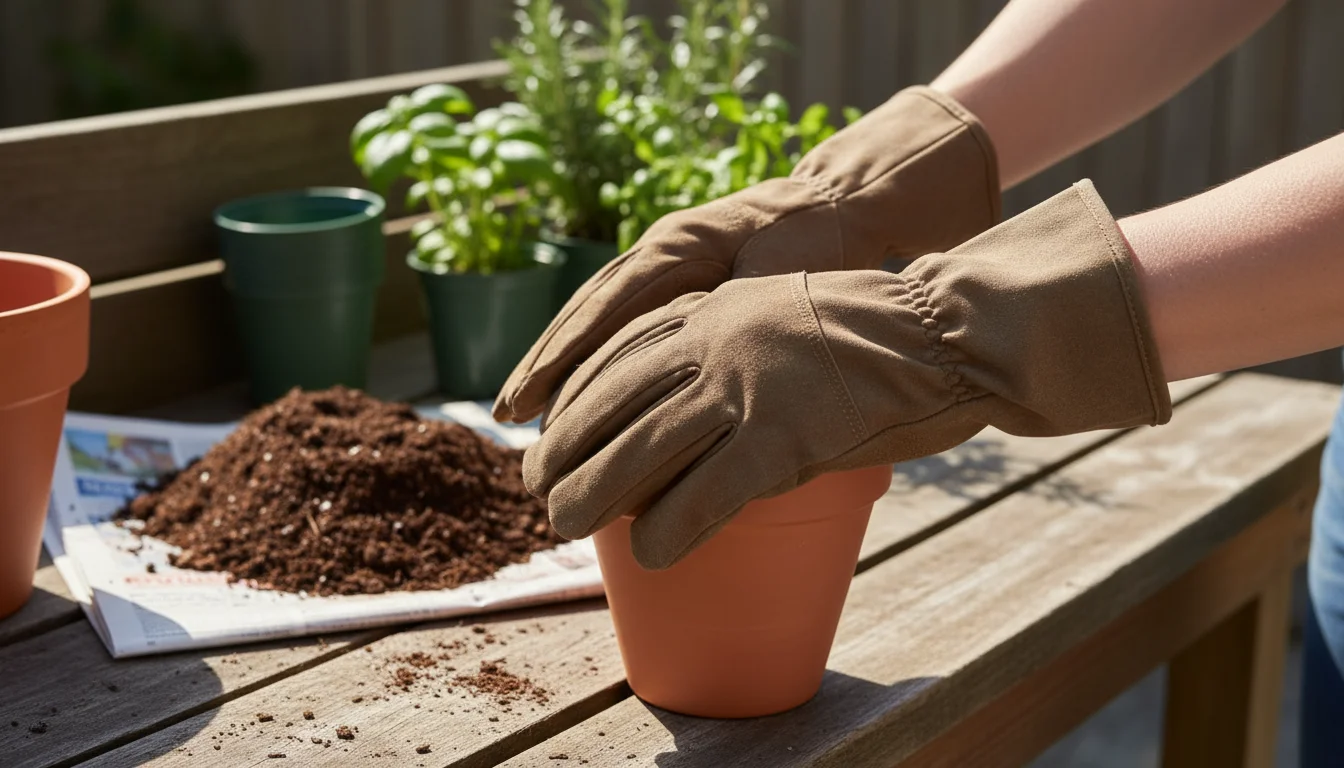
Prevent Disease and Contamination:
Soil contains microorganisms, some of which can cause infections if they enter cuts or open wounds. Wearing gloves prevents direct contact with potentially harmful bacteria or fungi. If you have any cuts, scrapes, or open wounds on your hands, ensure your gloves are intact and provide a complete barrier. Clean your gloves regularly to remove soil and pathogens, preventing their spread to other areas of your garden or home. The National Safety Council provides guidance on home and garden safety, emphasizing protective gear.
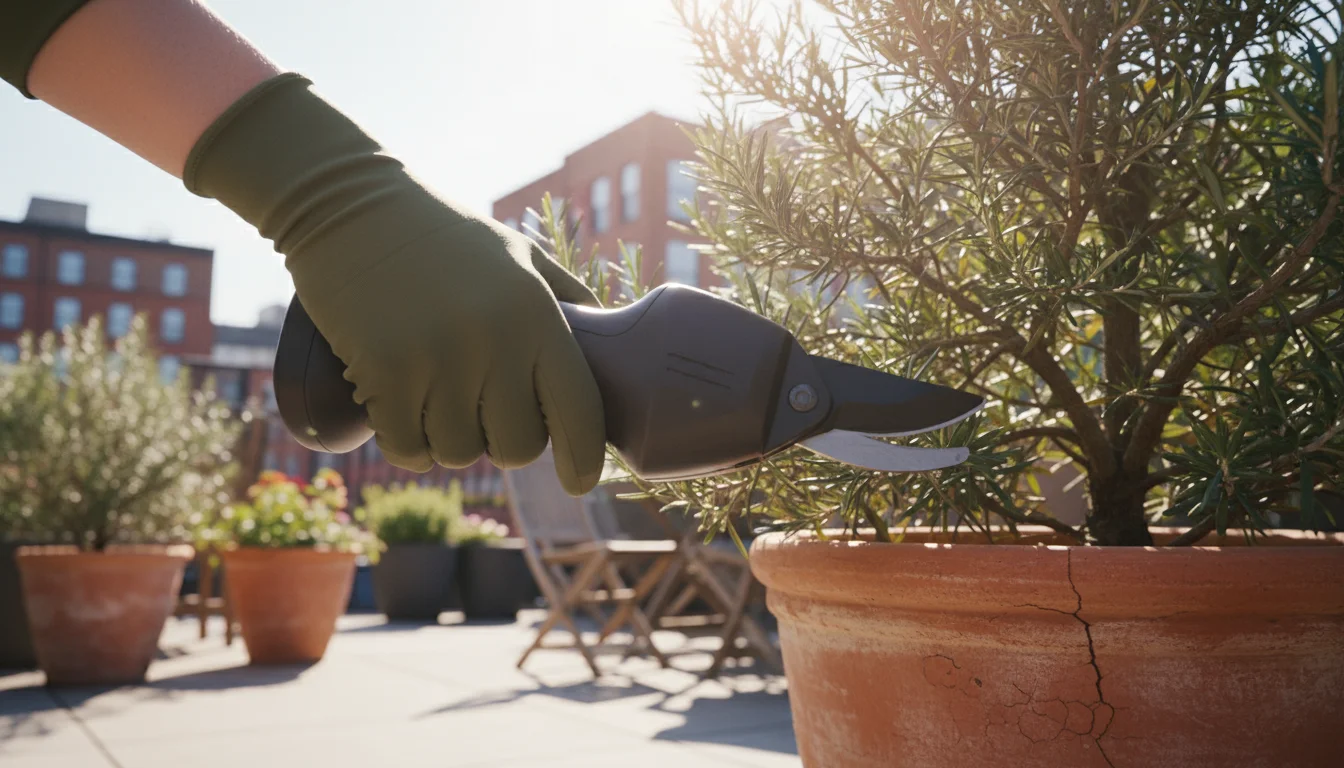
Avoid Snags and Entanglement:
Ensure your gloves fit snugly. Loose or oversized gloves can snag on tools, branches, or machinery, potentially pulling your hand into danger. This is especially important when using power tools, even small battery-operated pruners or trimmers. While most small-space gardeners primarily use hand tools, remaining aware of this risk is crucial. Always prioritize a fit that allows dexterity without excessive material that could catch.
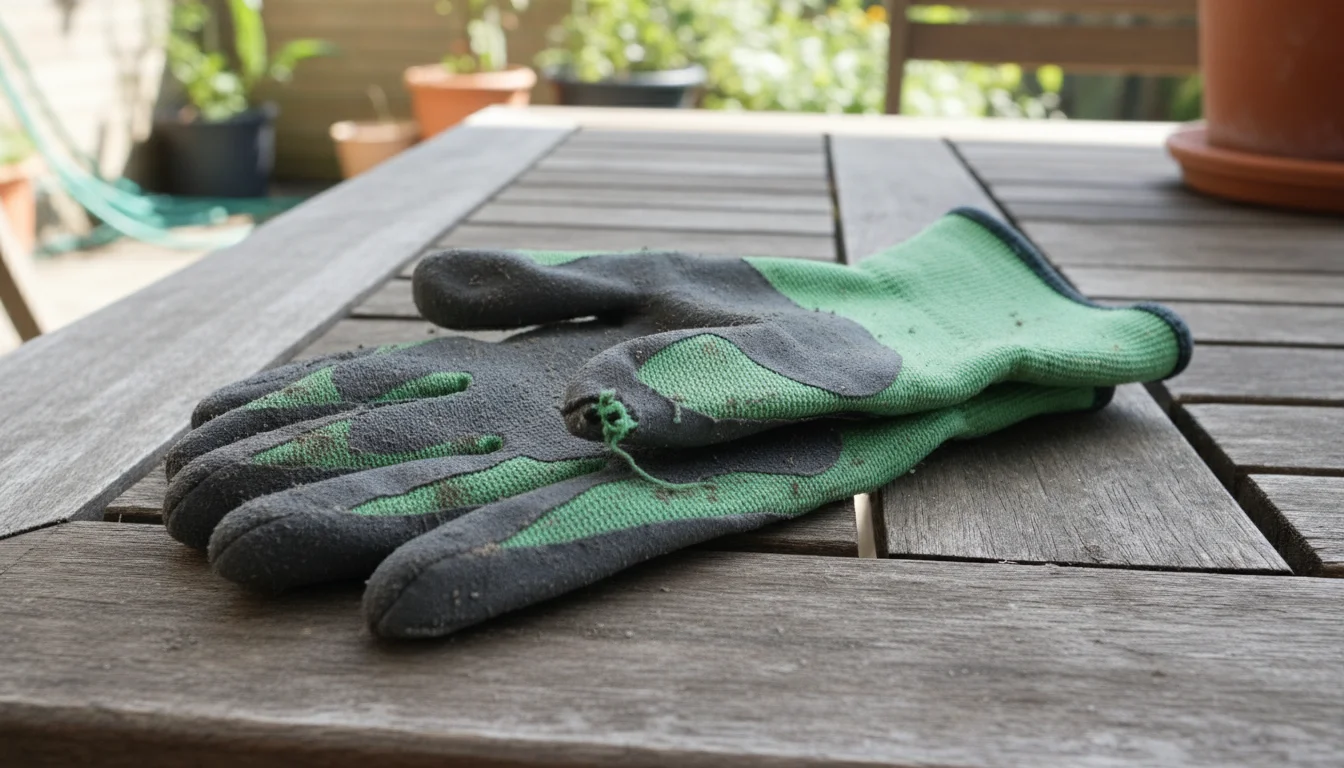
Inspect and Replace Regularly:
Before each use, quickly inspect your gloves for holes, tears, or thinning spots. A compromised glove offers compromised protection. Even a small puncture can allow thorns, chemicals, or pathogens to reach your skin. Replace worn-out gloves promptly. Continuing to use damaged gloves creates a false sense of security and puts your hands at risk. Think of your gloves as essential safety equipment, not just a casual accessory.
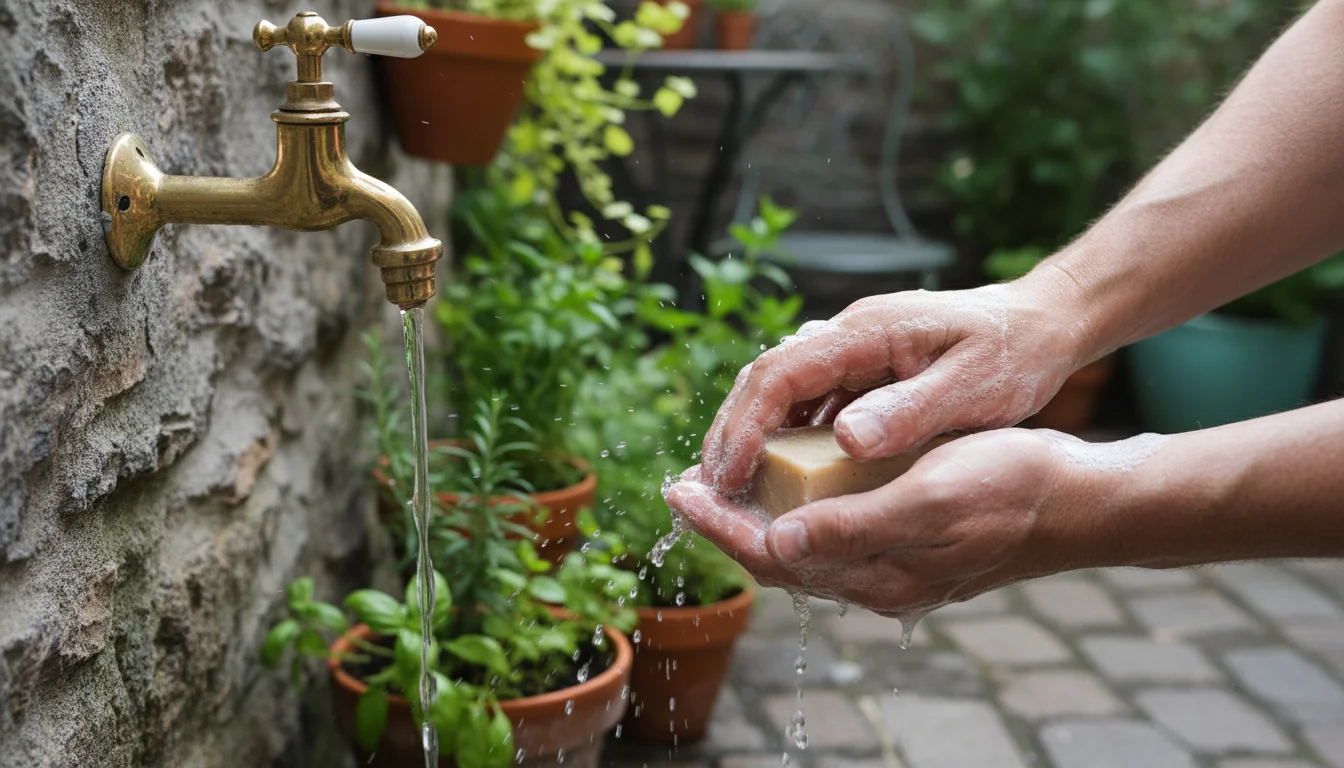
Clean Hands After Use:
Even with gloves, it is a good practice to wash your hands thoroughly with soap and water after every gardening session. This removes any residual dirt, sap, or microscopic particles that might have seeped through or transferred during glove removal. This simple step further reduces the risk of skin irritation or exposure to pathogens.
By integrating these safety practices into your gardening routine, you transform your gardening gloves from a simple accessory into a vital piece of personal protective equipment. This proactive approach ensures your hands remain healthy and protected, allowing you to enjoy your small garden without worry.
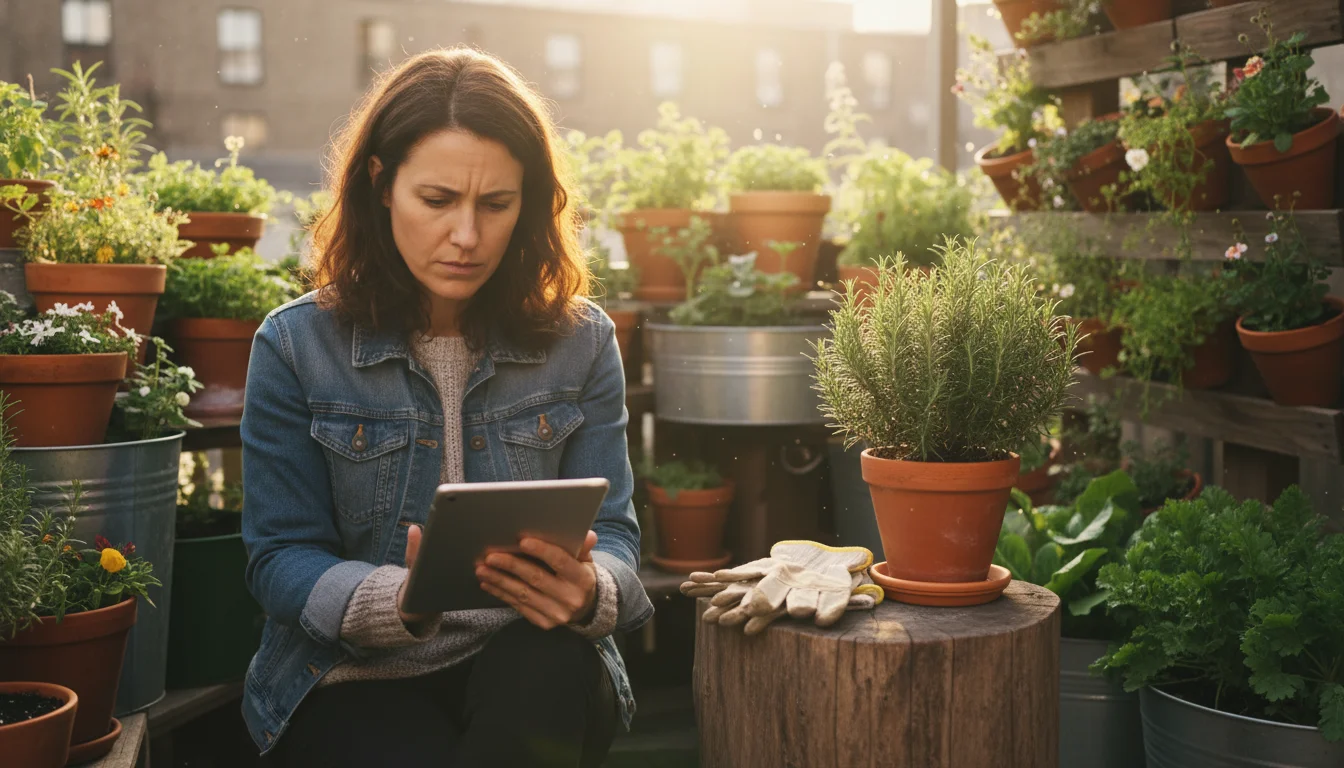
Frequently Asked Questions
Q: How often should I replace my gardening gloves?
A: Replace your gardening gloves when you notice significant wear, such as holes, tears, thinning material, or a loss of grip. For frequently used gloves, this might be every season or two. For less common use, they might last longer. Regular inspection helps you decide when it is time for a new pair to ensure consistent protection.
Q: Can I wash leather gardening gloves?
A: Generally, you should not machine wash or submerge leather gardening gloves. Water can stiffen and crack the leather, reducing its lifespan. Instead, brush off dry dirt. For tougher grime, wipe them with a damp cloth and a small amount of saddle soap. Allow them to air dry slowly away from direct heat, and consider conditioning them to keep the leather supple. This approach maintains the integrity of the material.
Q: What is the best type of glove for handling thorny roses?
A: For thorny roses, heavy-duty rose gloves are the best choice. These typically feature thick cowhide or goatskin leather, often with extended gauntlet cuffs that protect your forearms. Look for reinforced palms and fingers to prevent punctures from sharp thorns. While they reduce dexterity slightly, the superior protection they offer is essential for safely managing thorny plants.
Q: Are “one size fits all” gardening gloves effective?
A: “One size fits all” gloves often compromise on fit, which can reduce dexterity and comfort. For light, quick tasks, they might be acceptable. However, for serious gardening or tasks requiring precision or robust protection, a properly sized glove is always more effective. A snug fit improves grip, prevents blisters, and ensures the protective material stays in place. Invest in gloves that match your hand measurements for optimal performance.
Q: What should I do if my gloves get wet and muddy?
A: If your gloves get wet and muddy, clean them promptly. For synthetic or coated gloves, rinse them under running water, wash with mild soap, and then air dry completely. For leather gloves, brush off as much mud as possible when dry, then gently wipe clean with a damp cloth if necessary, and allow them to air dry slowly. Never store damp gloves, as this encourages mildew and odors, and can degrade the material. Proper cleaning and drying ensure your gloves stay hygienic and last longer.
For reliable tool and safety guidance, see
UF/IFAS — Microirrigation for Home Landscapes,
Oregon State Extension — Cleaning & Sharpening Tools,
Missouri Botanical Garden — Watering Tips,
National Safety Council — Home & Garden Safety and
Royal Horticultural Society (RHS) — Tools & Equipment Advice.
Disclaimer: Follow manufacturer instructions and local regulations. Wear appropriate protection, store blades safely, and keep tools away from children and pets.
